Finally, the modern software development industry has found the solution to many of its development-related issues in ‘DevOps, CI/CD, and containers.’ It is not mandatory to use all three together, but in many ways, they depend on each other and so are often used in combination.
DevOps is a cultural philosophy empowering the collaboration between development and IT teams, while CI/CD is about facilitating an effective process for faster software delivery. Containerization refers to packaging an application with its dependencies to provide consistent development and deployment environments for applications.
The successful implementation of any or all of these results in the optimal automation of the software development process. In turn, you can achieve agility and scalability, reduce the risk of errors and downtime, and improve the quality of your digital product. However, these technologies have a reputation for being challenging to achieve, which doesn’t have to be the case!
Here’s a comprehensive curation of the diagrams that can help you easily and quickly understand the core concepts, implementation, challenges, tools, and other complicated concepts about DevOps, CI/CD, and containers.
How does DevOps transform IT culture and processes?
1. 7 C’s of DevOps lifecycle
Everything is continuous in DevOps – from planning to monitoring. This entire lifecycle can be broken down into seven phases where continuity is at its core. Any phase in the lifecycle can iterate throughout the projects multiple times until it’s finished.
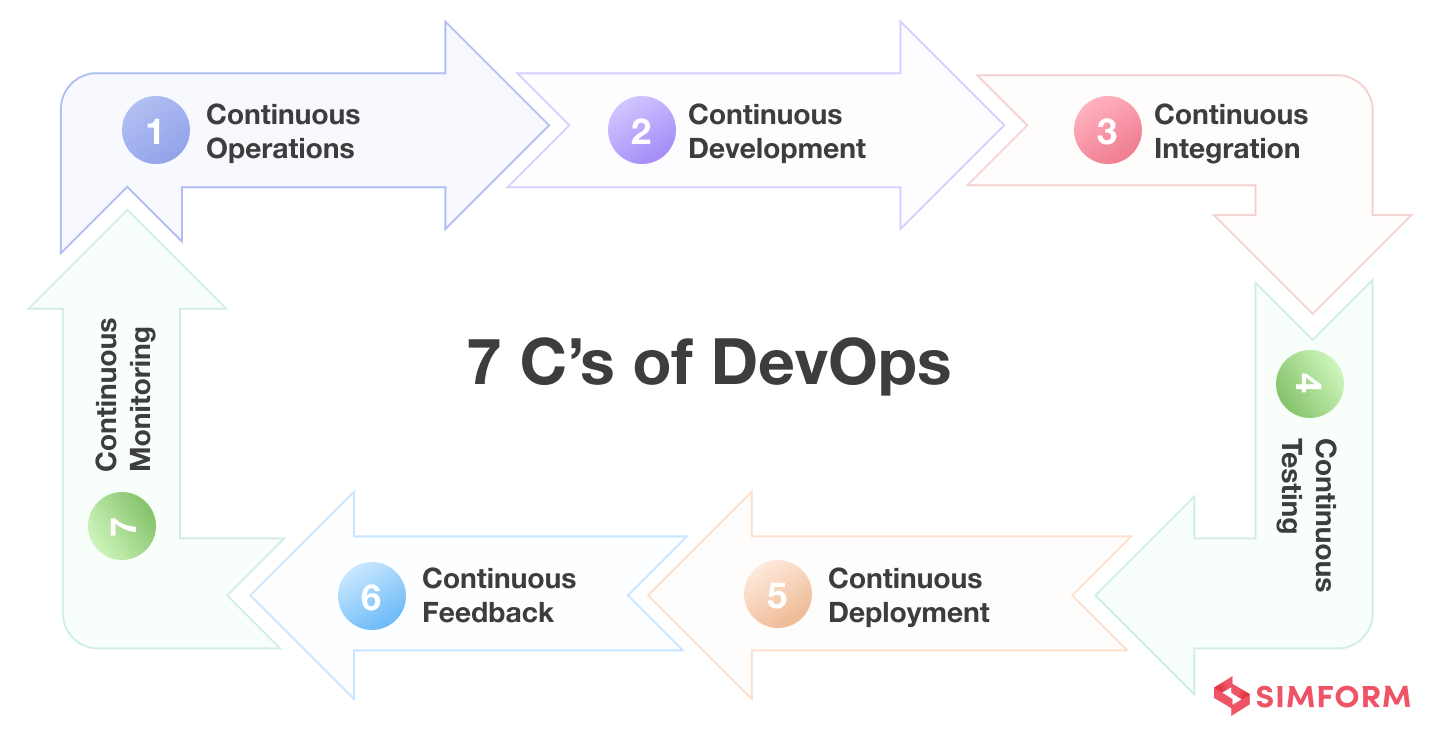
2. Key DevOps principles
With a strong focus on continuous improvement, DevOps adds a new dimension to the software development process that helps enterprises increase product quality, release frequency, and reduce errors. The insights from industry experts who have “been there and done it before” will help you to deal expertly with DevOps.
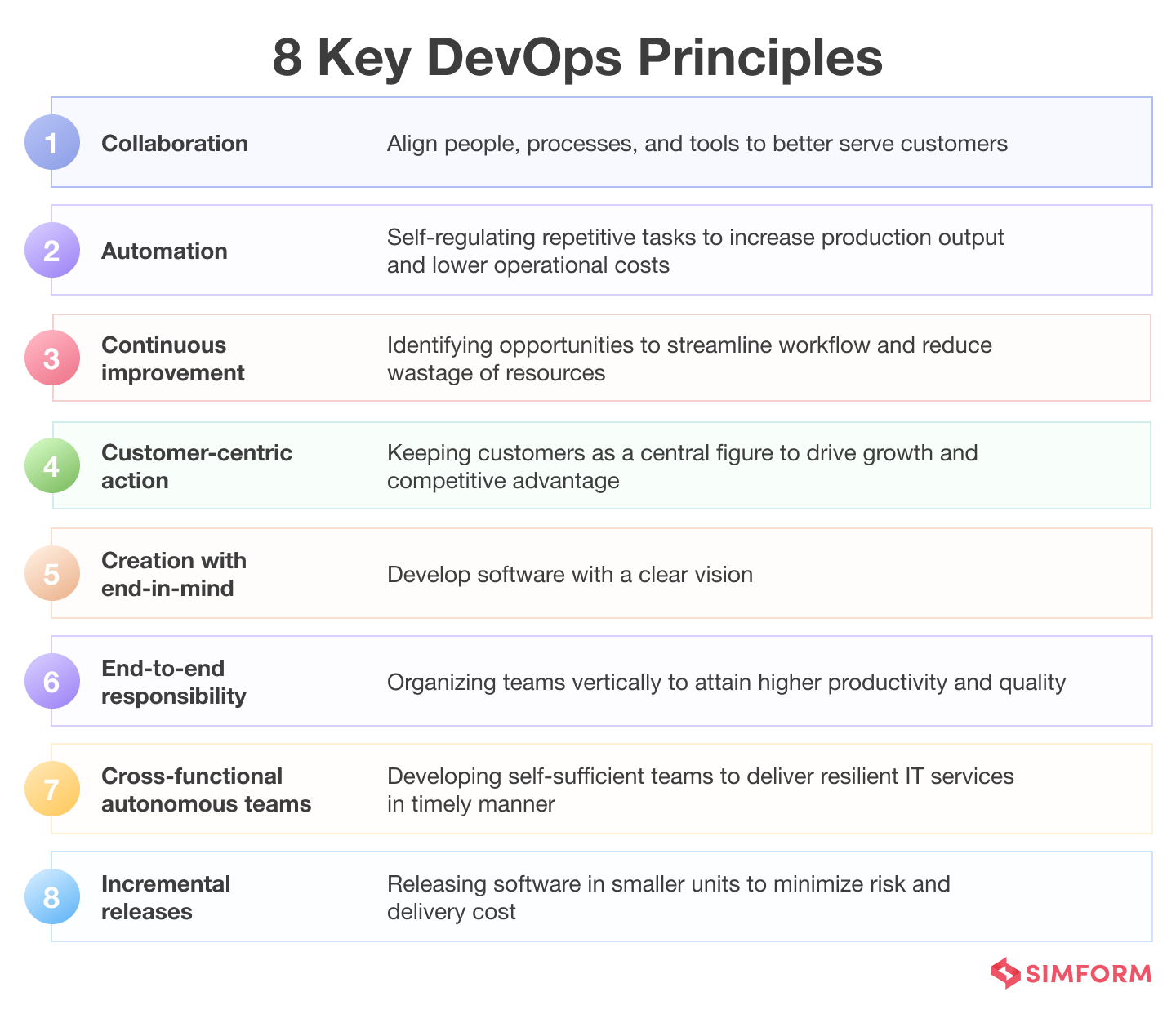
3. Benefits of DevOps
DevOps can be an organic fit for your organization and provide many benefits with a correct adoption process. So, before planning a robust DevOps strategy, you need an elaborate understanding of how DevOps is beneficial to different aspects of the organization, like technical, operational, and business.
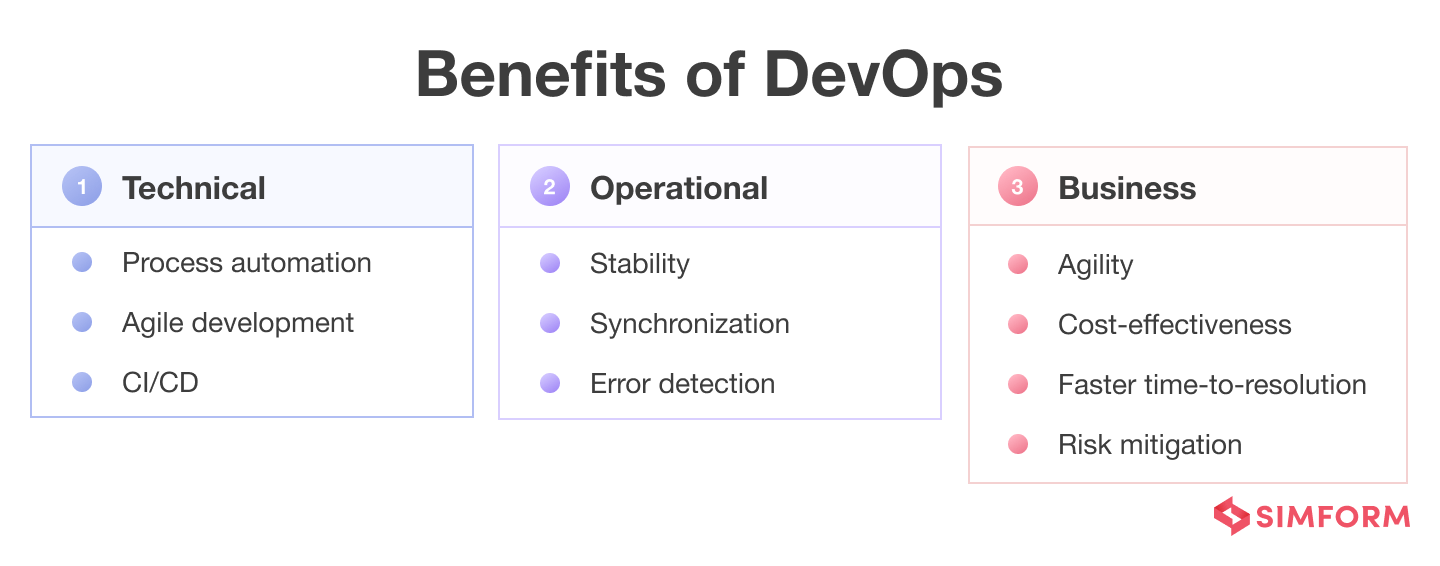
4. Challenges in adopting enterprise DevOps
Technology adoption can be expensive and involves risks. The same is the case with DevOps. For example, tracking a given task in DevOps is hard as multiple teams are involved. Knowing the challenges beforehand can help you better plan, manage costs, allocate resources, and mitigate risks.
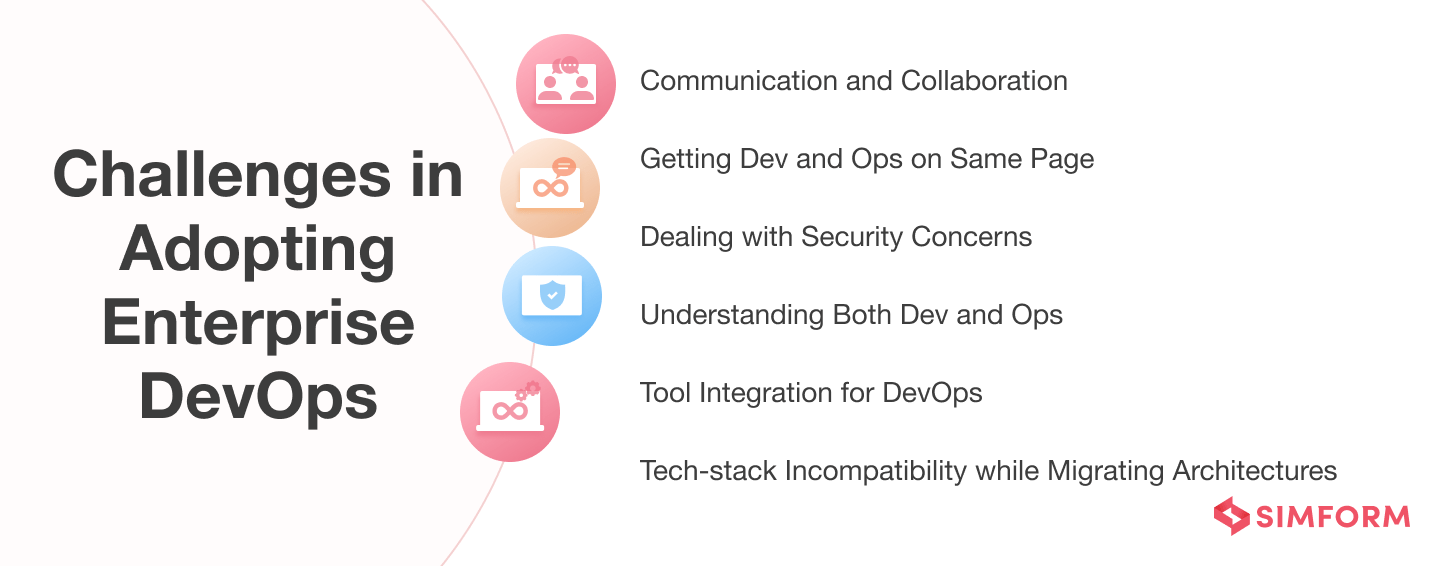
5. 7 steps to implement DevOps
While building a DevOps strategy, you should strive to achieve five parameters — scalability, reliability, collaboration, frequent and rapid delivery, and security. The following steps will help eliminate the disarray of activities and create a successful DevOps implementation roadmap for your organization.
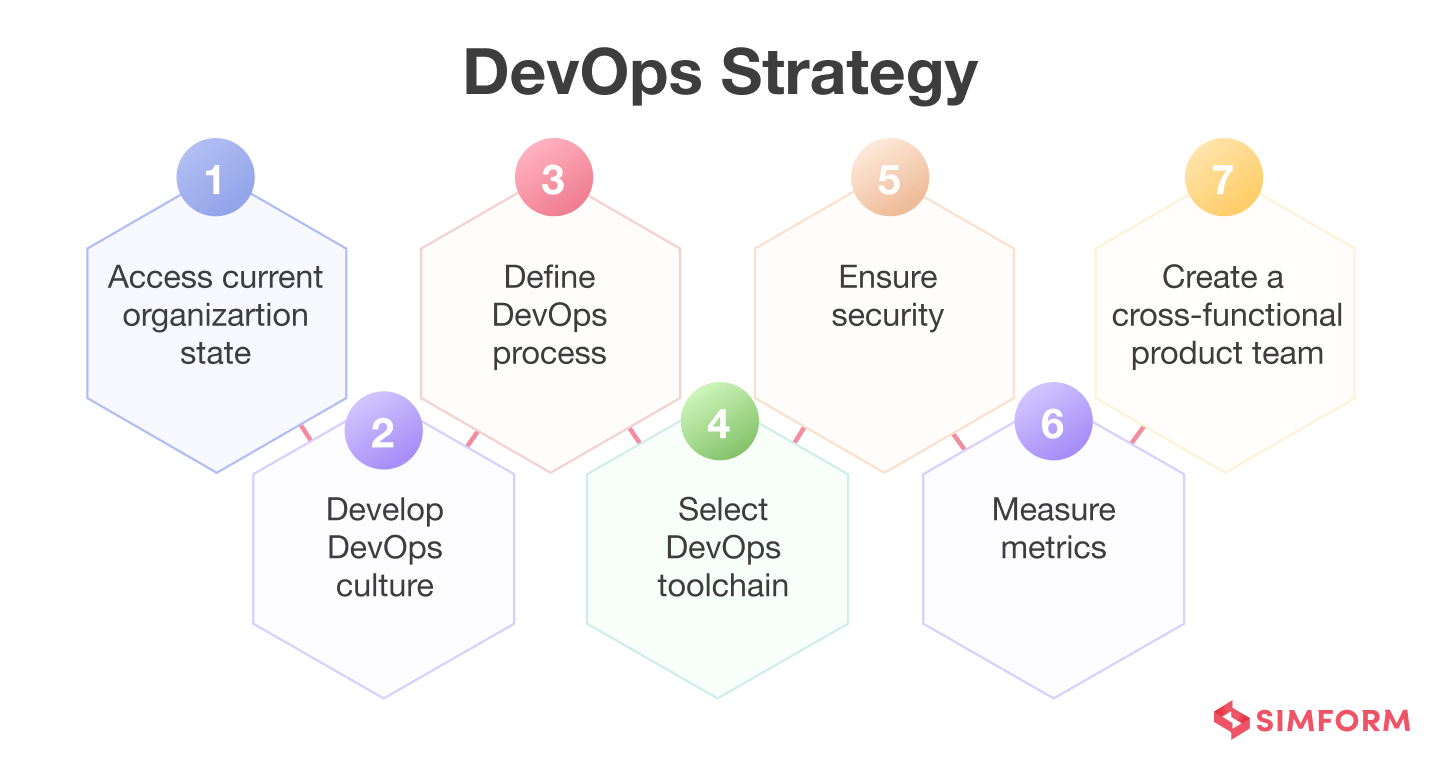
6. DevOps metrics and KPIs for success
Tracking metrics is integral for the DevOps team to enable organizational agility and transparency. After all, keeping the team updated about the progress and bottlenecks always gives space for improvement and innovation.
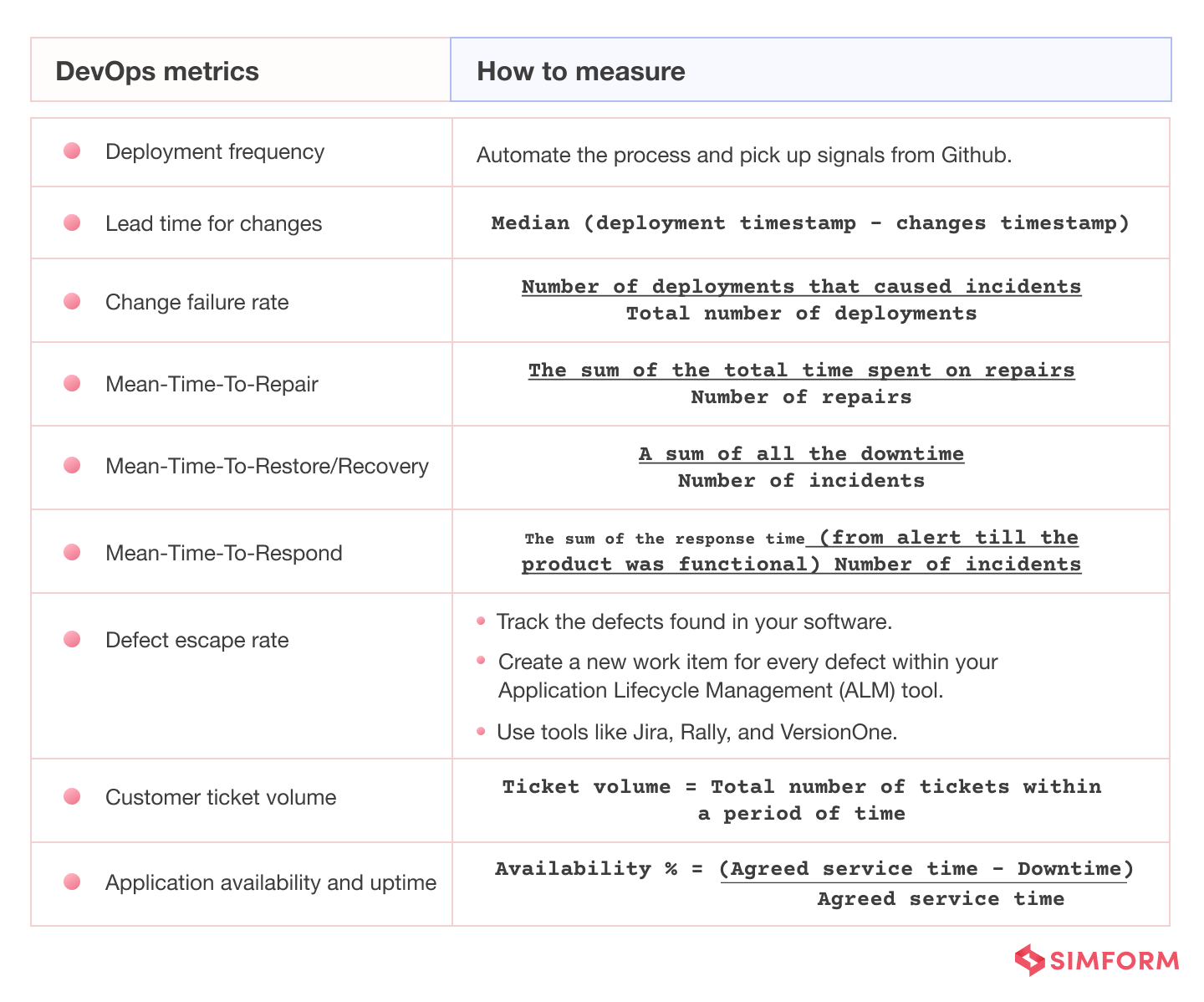
7. DevOps best practices for devs
DevOps adoption requires organization-wide cultural change and can be challenging. However, as with any methodology, there are some tips and principles that you can follow to ease your DevOps journey and attain more benefits from it.
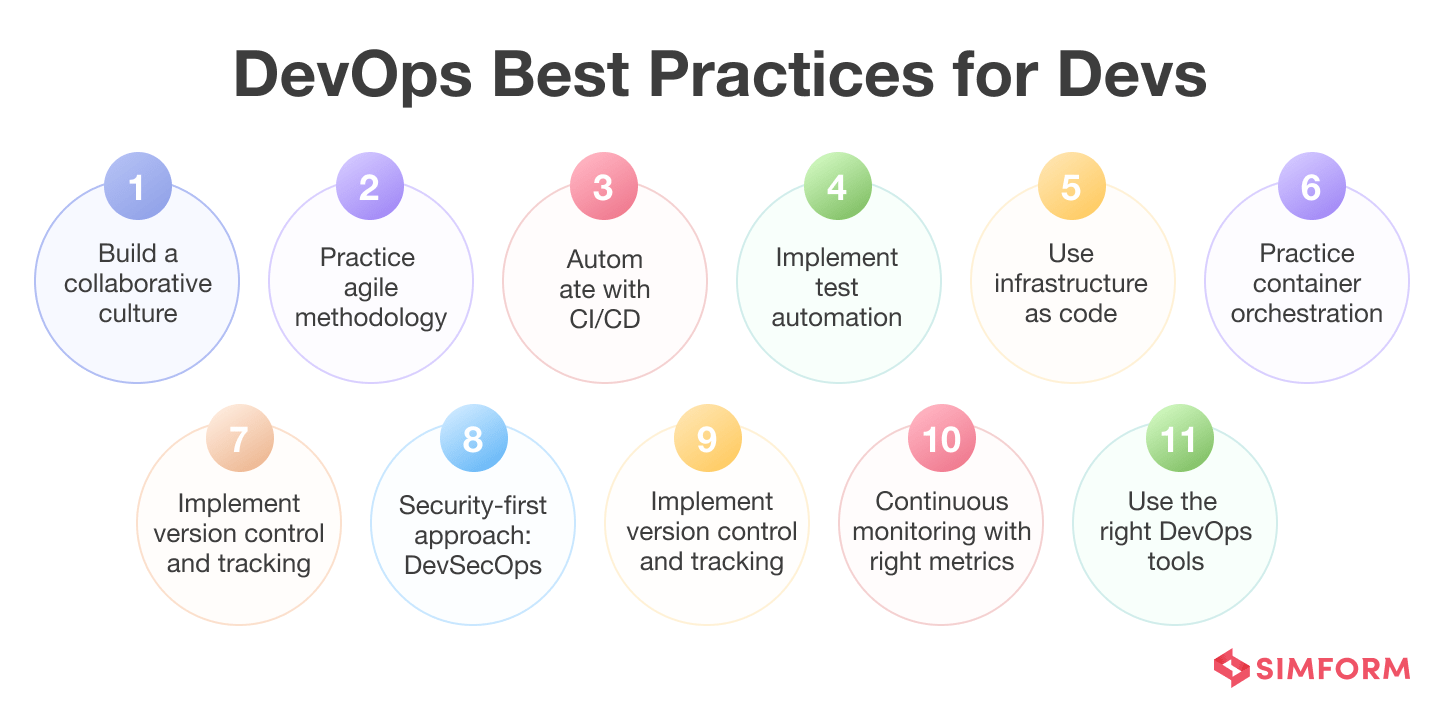
8. DevOps deadly sins and how to avoid them
Knowing the DevOps principles and the implementation steps is great. But you should also be aware of the challenges and the deadly sins that should be avoided while adopting DevOps – a massive ecosystem with various elements.
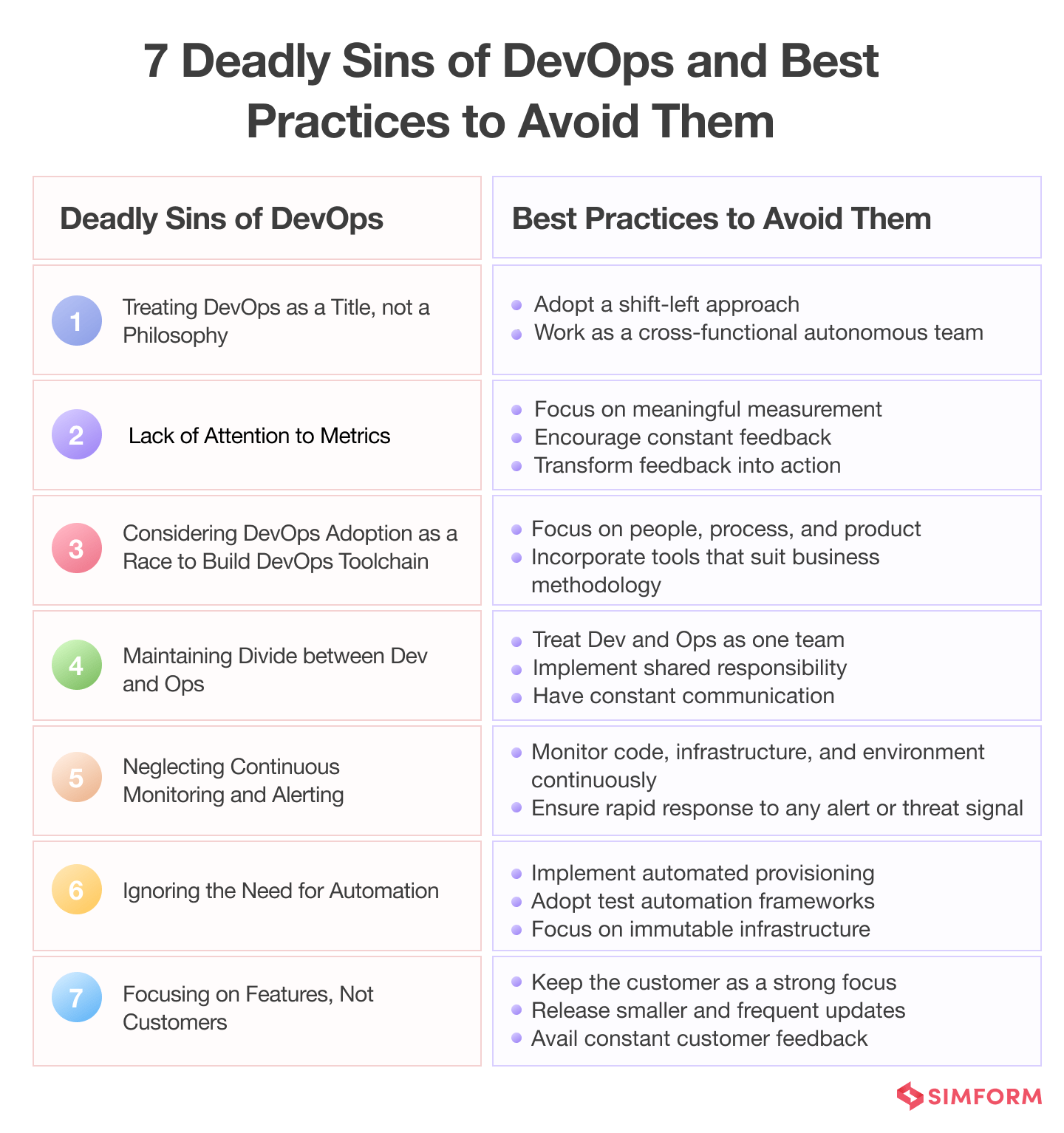
9. Agile vs DevOps
Both Agile and DevOps complement each other and are joint rulers in the software engineering ecosystem. Despite overlapping with one another to a great extent, there are some significant differences between the two. Here’s the comparison.
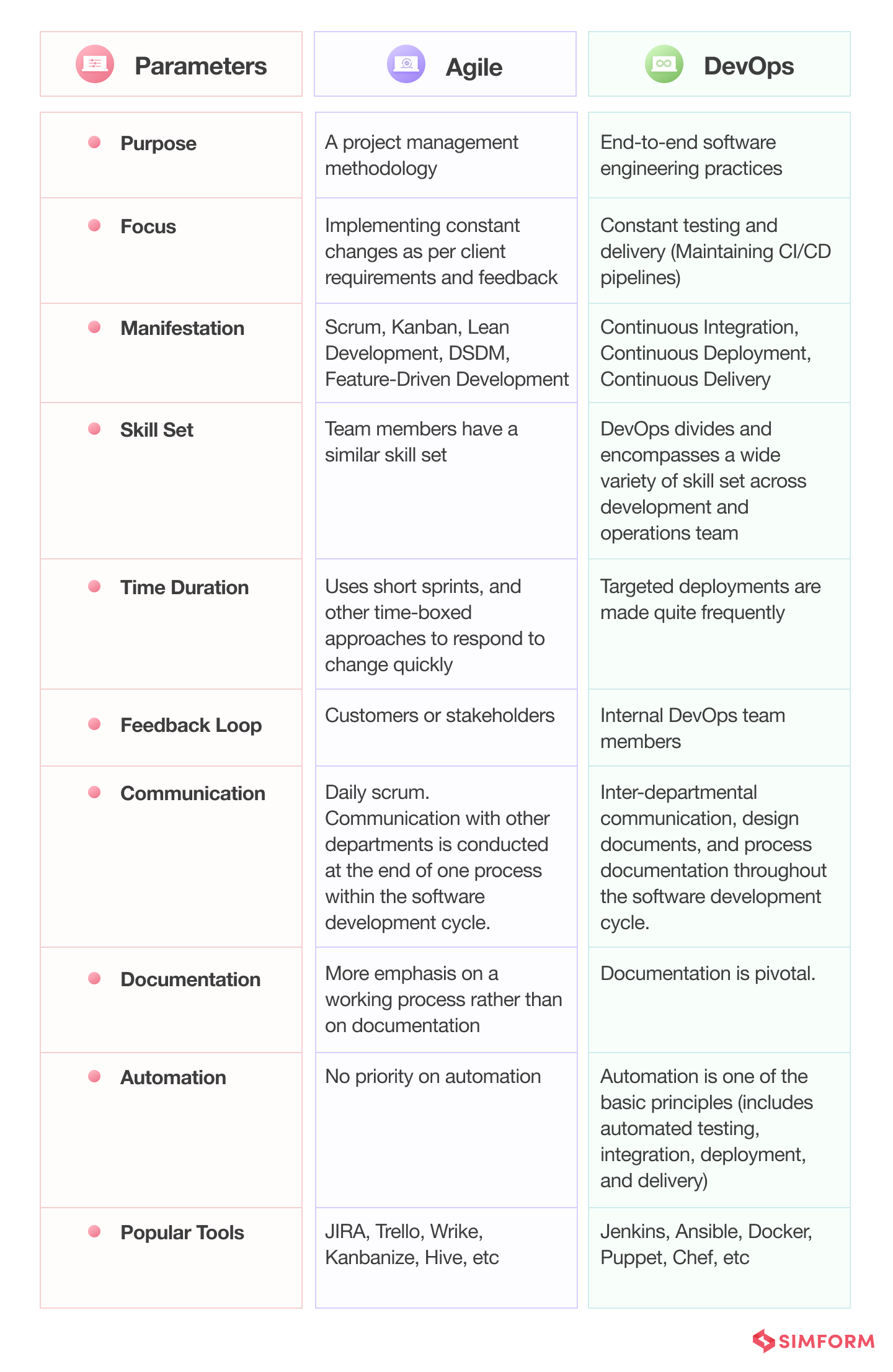
10. DevOps automation roadmap
DevOps can be implemented without automation, but it won’t be that effective. Automation empowers DevOps to support multiple projects and pipelines in a cost-effective way and has become a fundamental principle of DevOps.
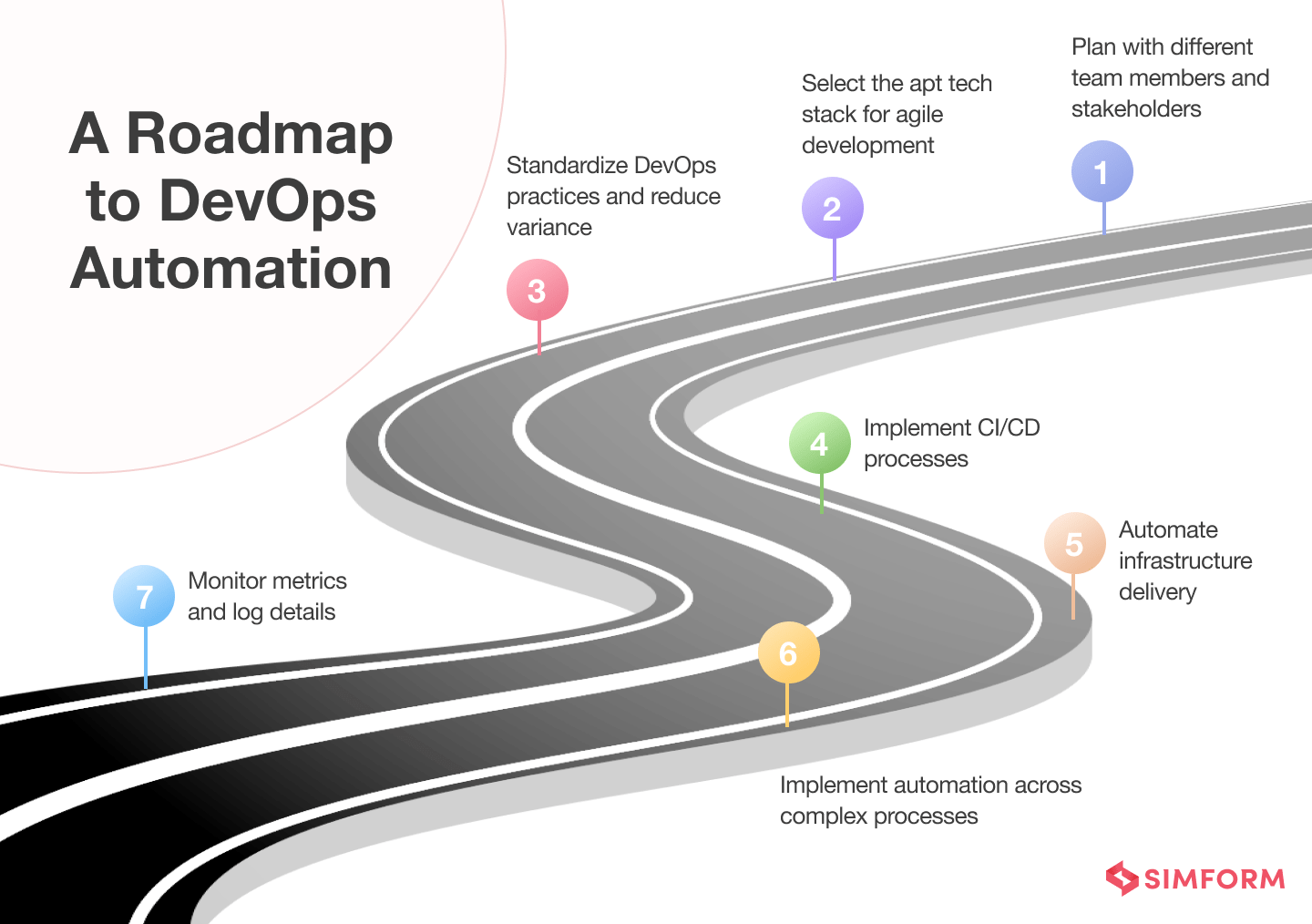
11. Benefits of DevOps automation
DevOps automation generally automates and streamlines many tasks handled by various teams, such as code analysis, unit testing, other testing processes, stage-wise deployment, and release management. So, here are some advantagesthat you should know.
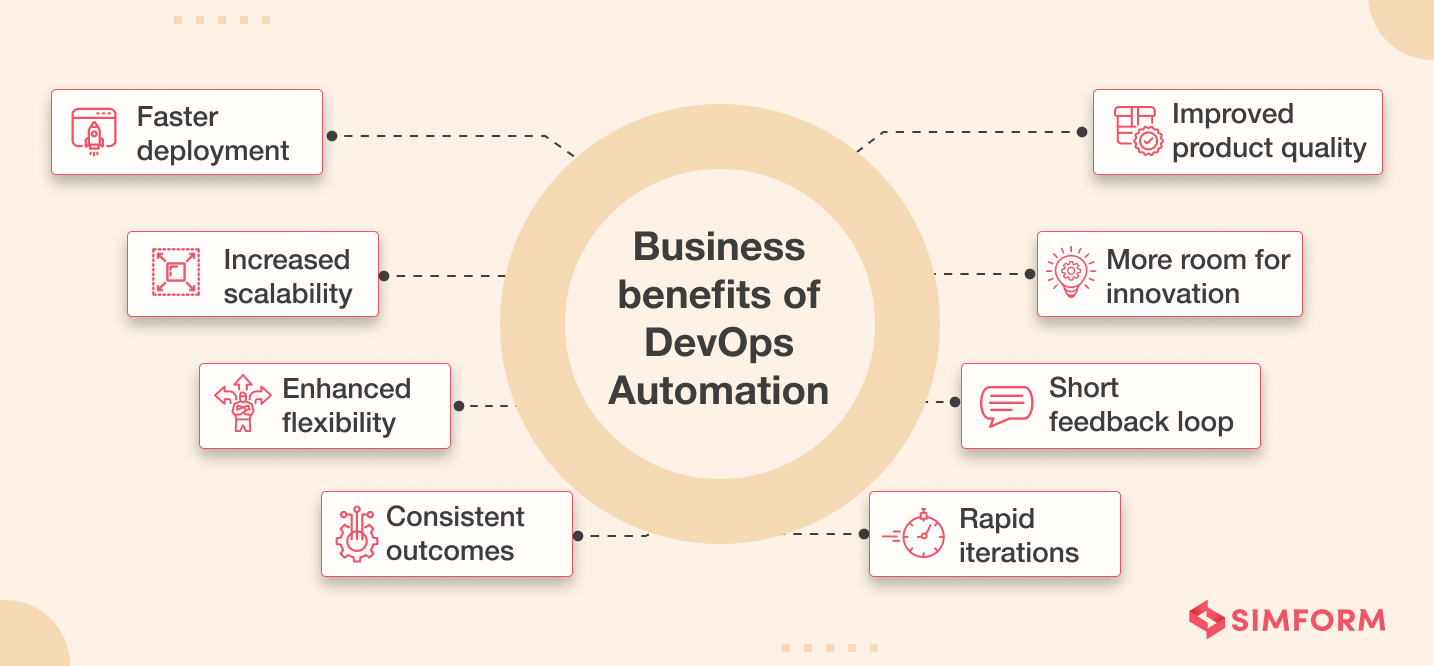
12. Top DevOps automation tools
The DevOps model highly depends on the tools to help teams reliably and quickly deploy and innovate for their customers. By automating tedious and manual tasks, these tools help manage complex environments and go well with high-velocity DevOps culture.
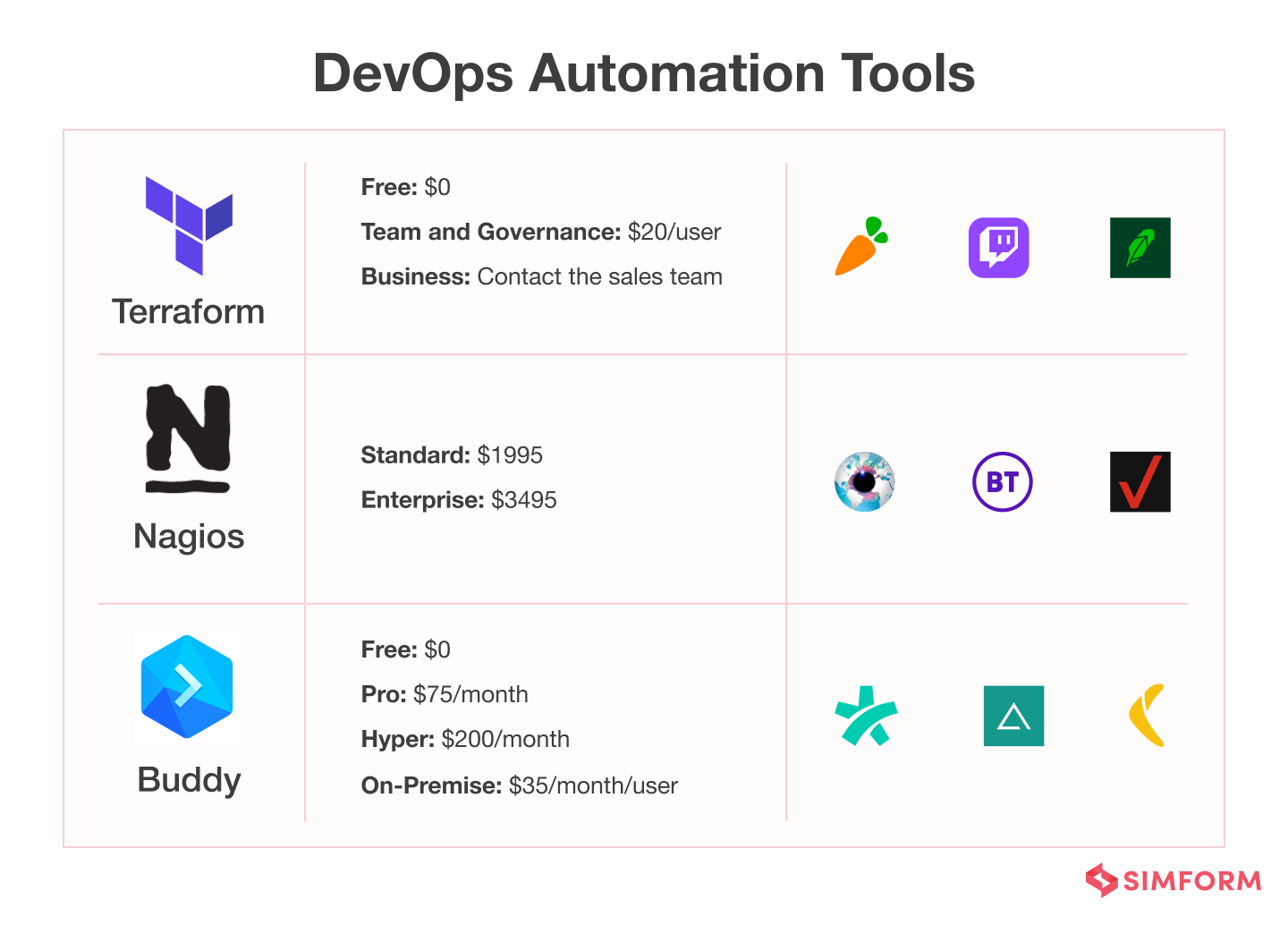
13. DevOps Monitoring
Monitoring in DevOps offers a comprehensive and real-time view of the status of the production environment with insights into applications, infrastructure, and services. Implementing a DevOps monitoring strategy requires a profound knowledge of best practices, use cases, the right monitoring platform, and a robust toolchain.
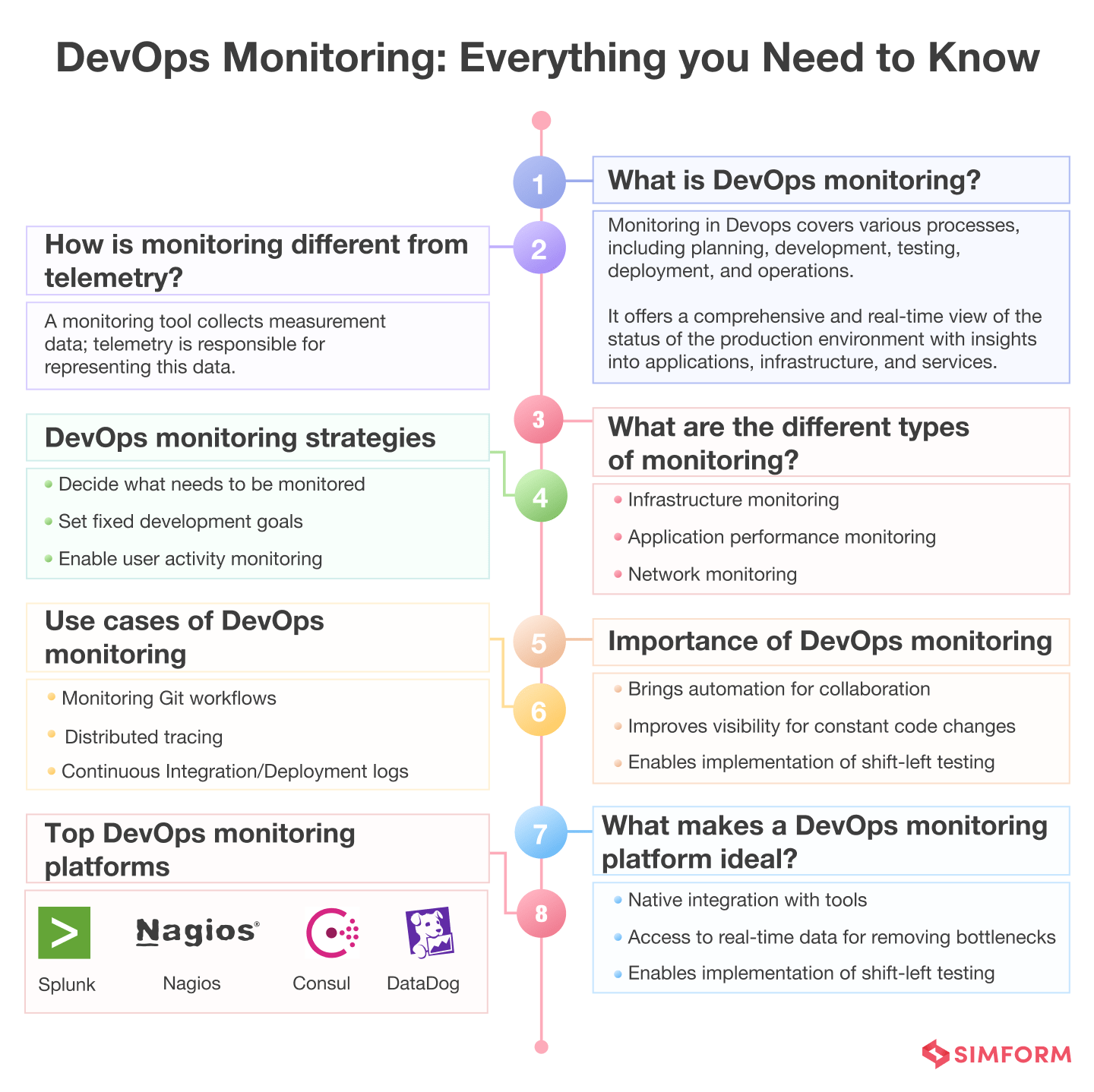
14. Database DevOps process
With the increasing scale of database changes, DBAs need to standardize app development and database development processes. Conjoining the database work process under a unified DevOps process ensures that upcoming changes in the application code are coordinated with changes in the database code.
The Database DevOps process consists of 3 main tasks, closely similar to implementing DevOps for application development.
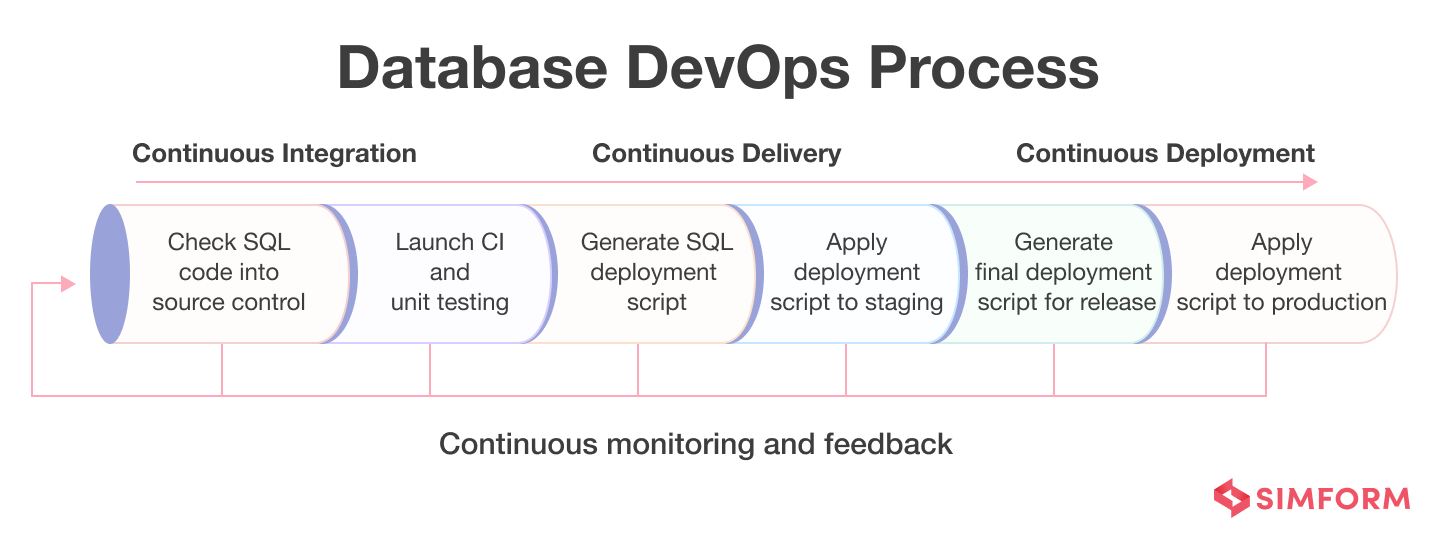
15. Ideal Database DevOps capabilities
Extending the DevOps culture for database management can be equally, or even more, advantageous as it is for the software development process. More importantly, it can eliminate the bottleneck of slow data reviews and code changes in the database.
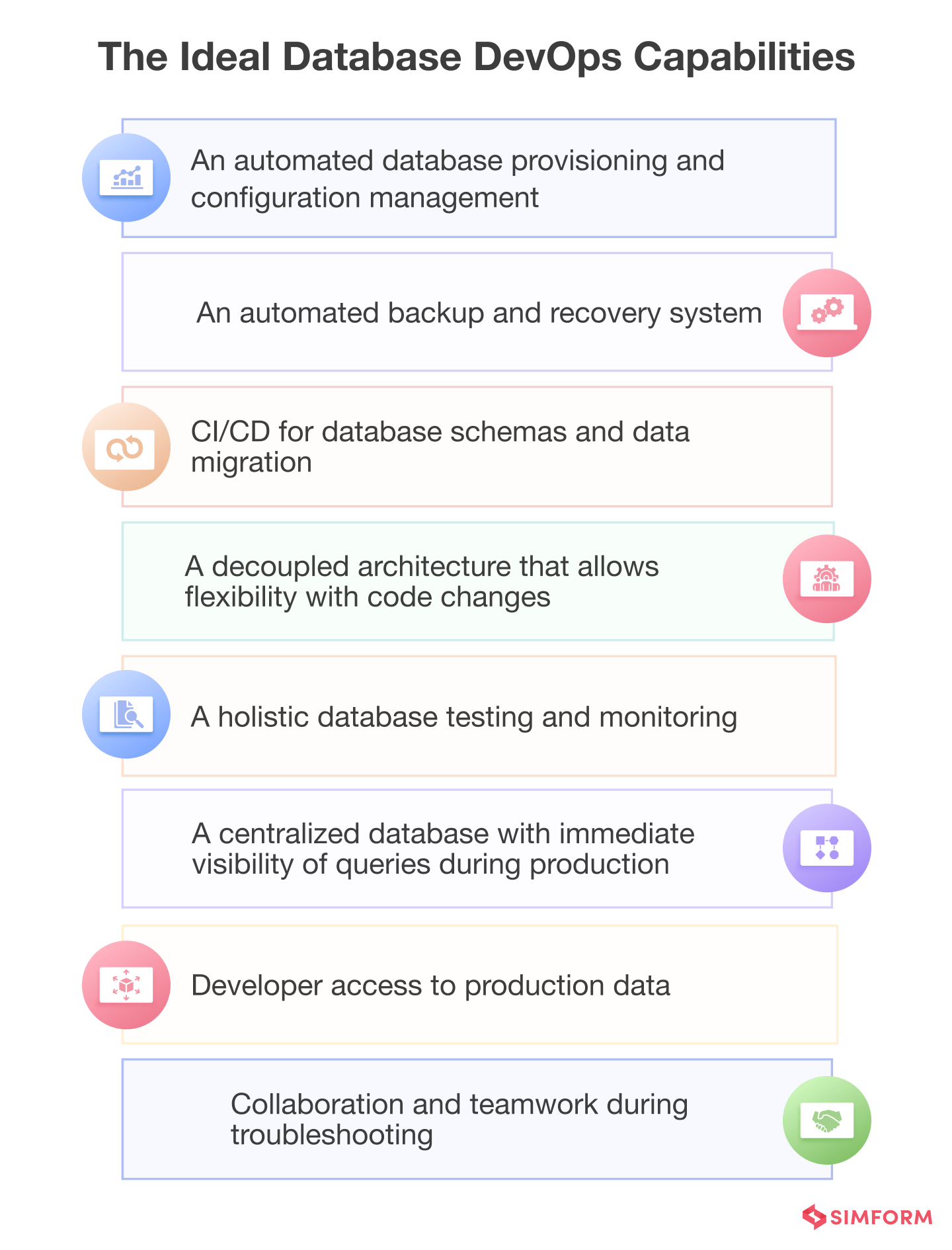
16. Steps for Database DevOps implementation
How you implement database DevOps for your work processes determines its success and the business benefits your organization would receive in the long run. While every organization will have its own implementation process, there are some standard step-by-step guidelines you should keep in mind.
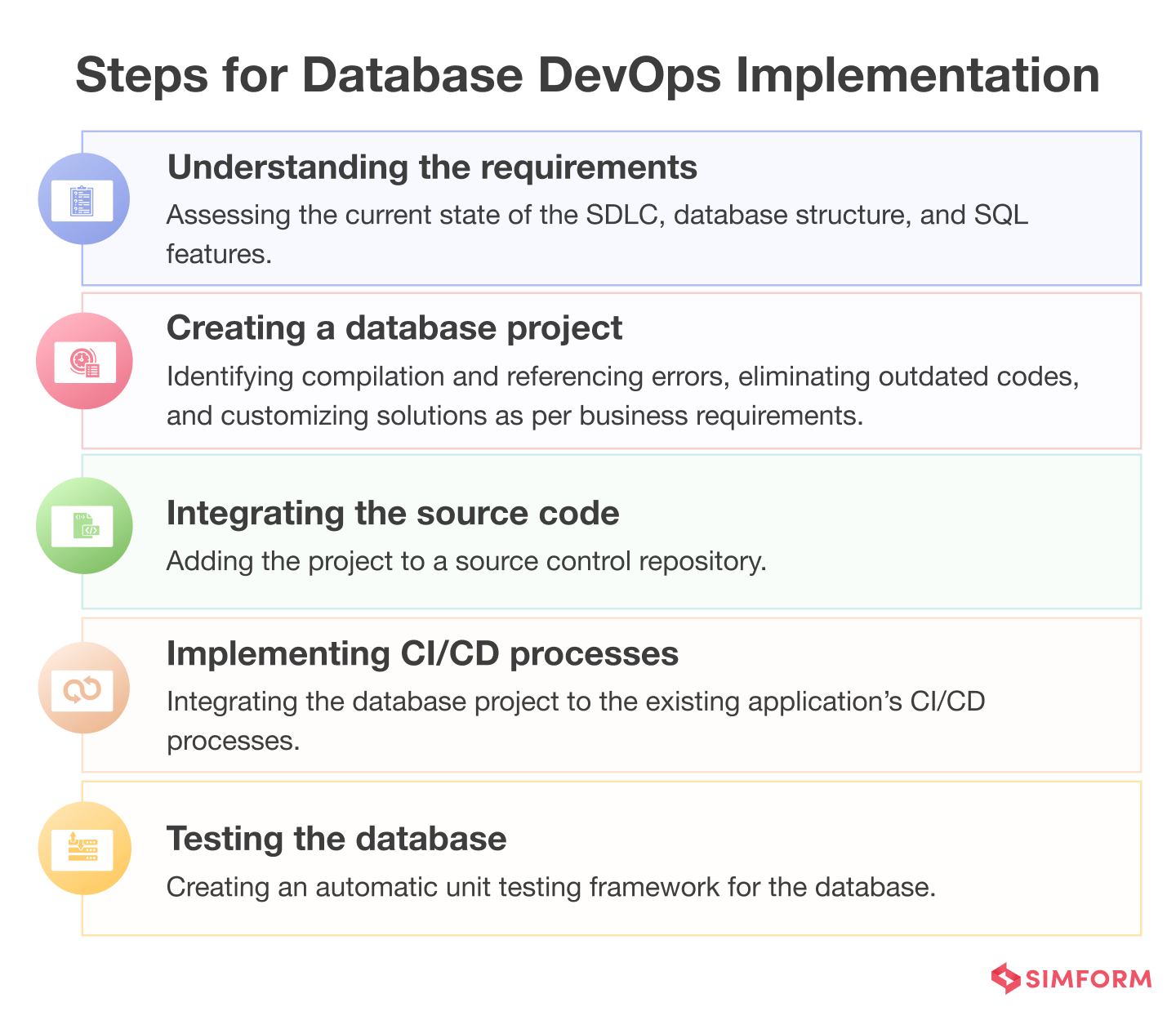
17. Getting started with DevOps outsourcing
Outsourcing DevOps may differ from traditional outsourcing. There is no one-size-fits-all approach to it, as DevOps is a broad and ambiguous concept. For effective DevOps outsourcing, below is a step-by-step approach to getting started with DevOps, choosing the right partner, and making it a success.
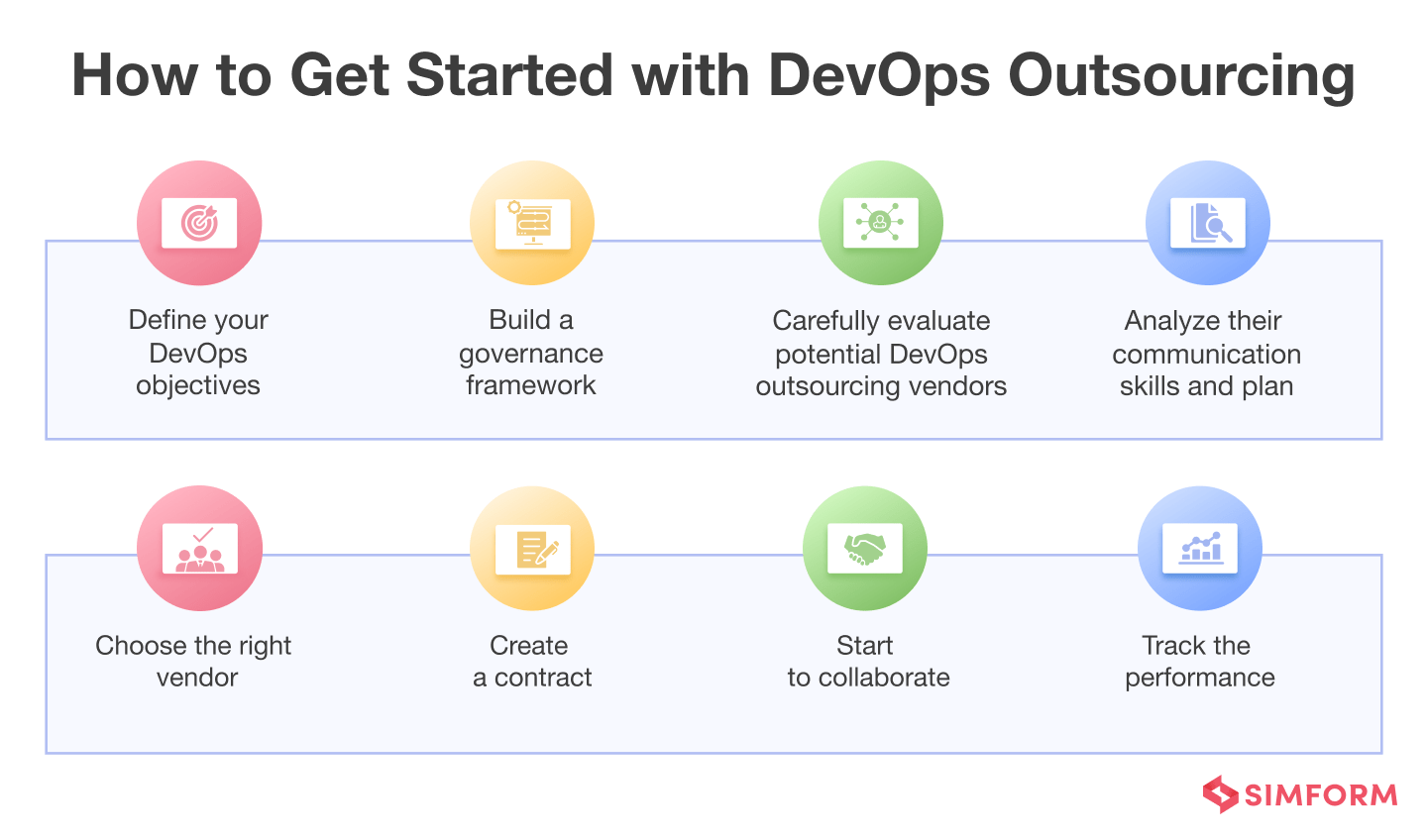
18. DevOps toolchain
Various DevOps tools, often from different vendors, are available in the market to perform particular activities, enabling faster and more efficient product delivery. However, deciding which ones are right for your environment can be difficult.
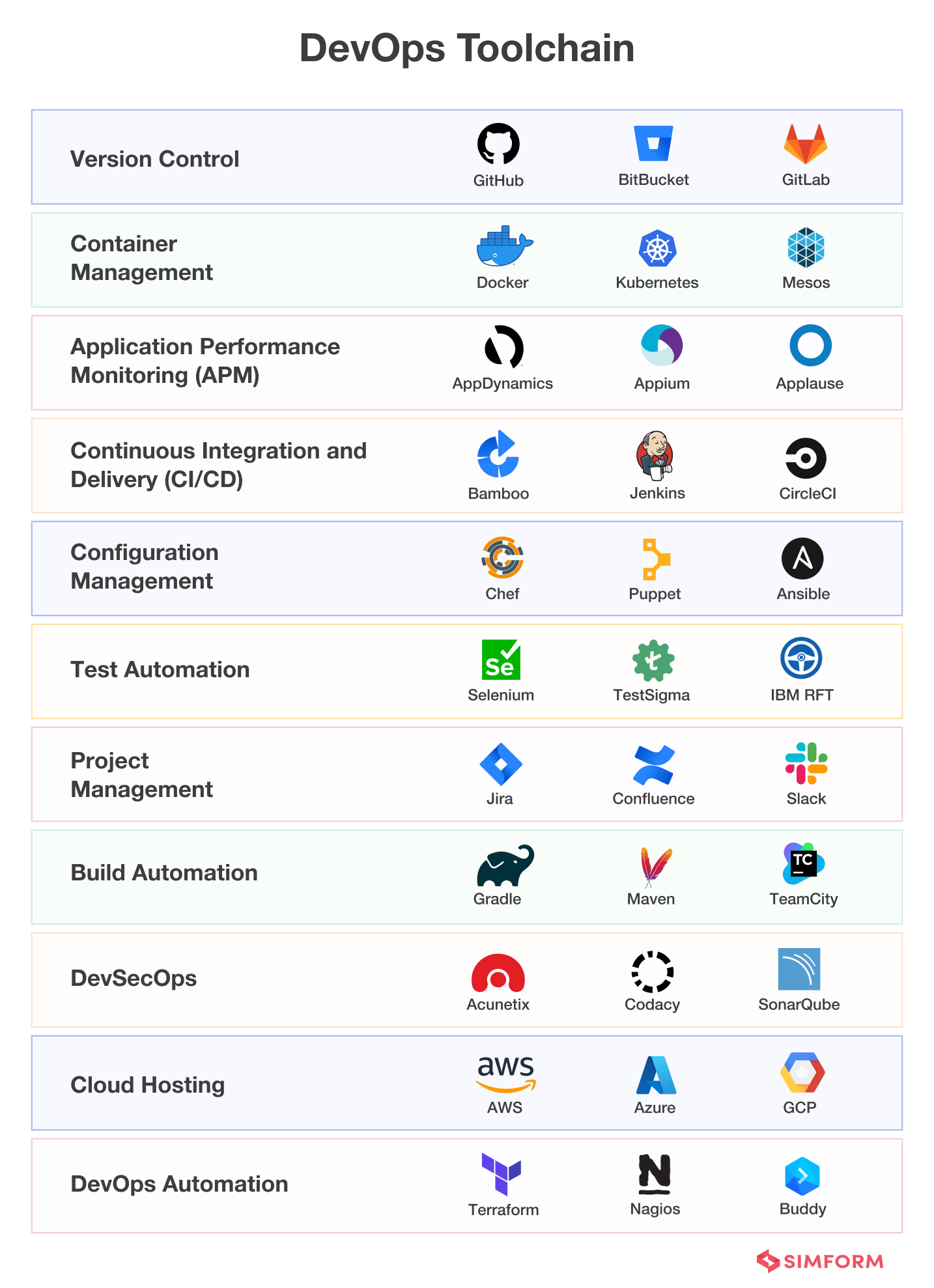
19. Top project management tools
A project management tool helps you plan, organize, and manage resources. It also assists in estimating the usage of resources and thereby helps track and manage the projects effectively.
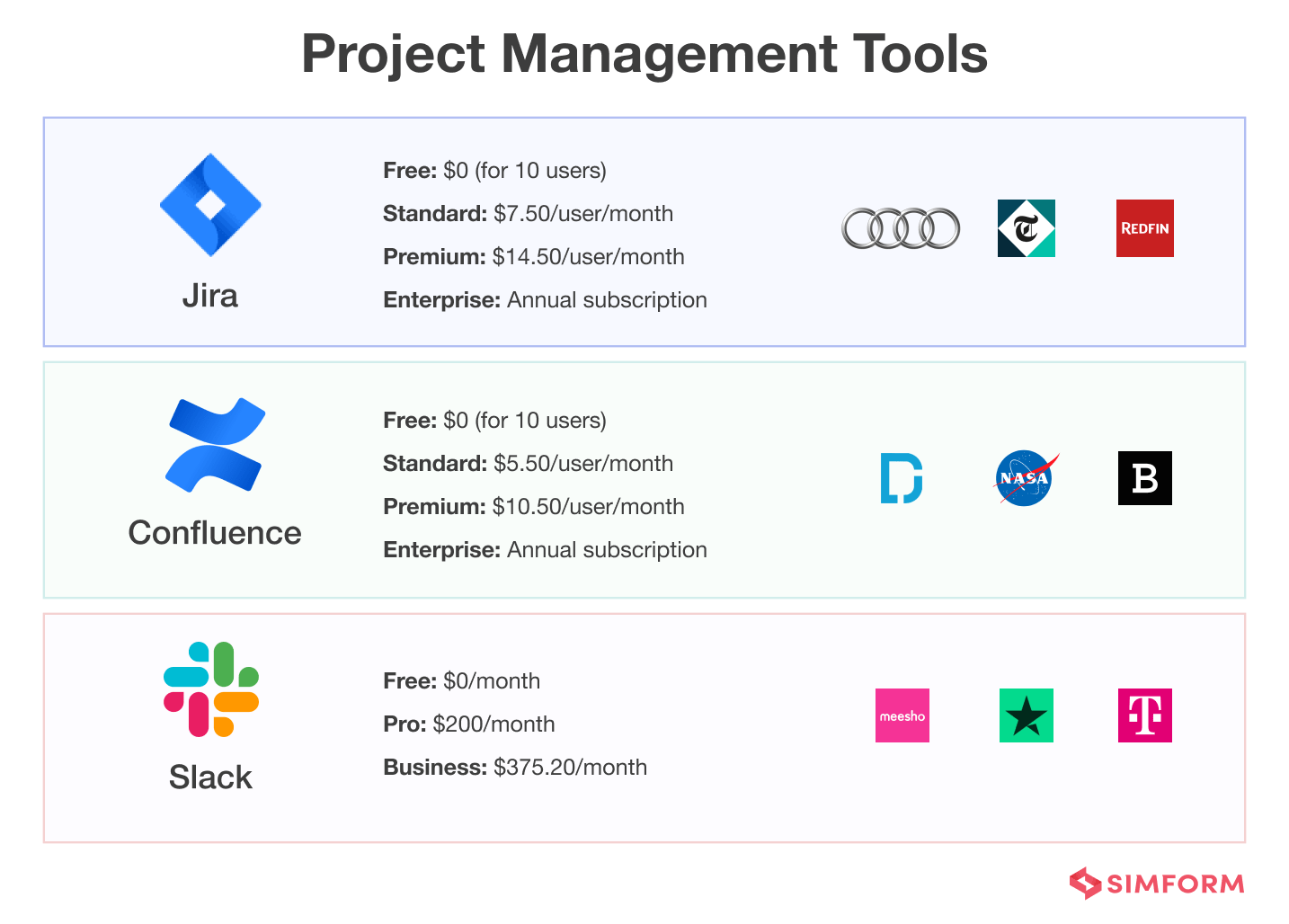
20. Top cloud hosting tools
Cloud hosting tools help you make applications and websites accessible using cloud resources and ensure scalability, reliability, and flexibility for your application. Unlike traditional hosting, the solutions are not deployed on a single server but on a network of connected virtual and physical cloud servers.
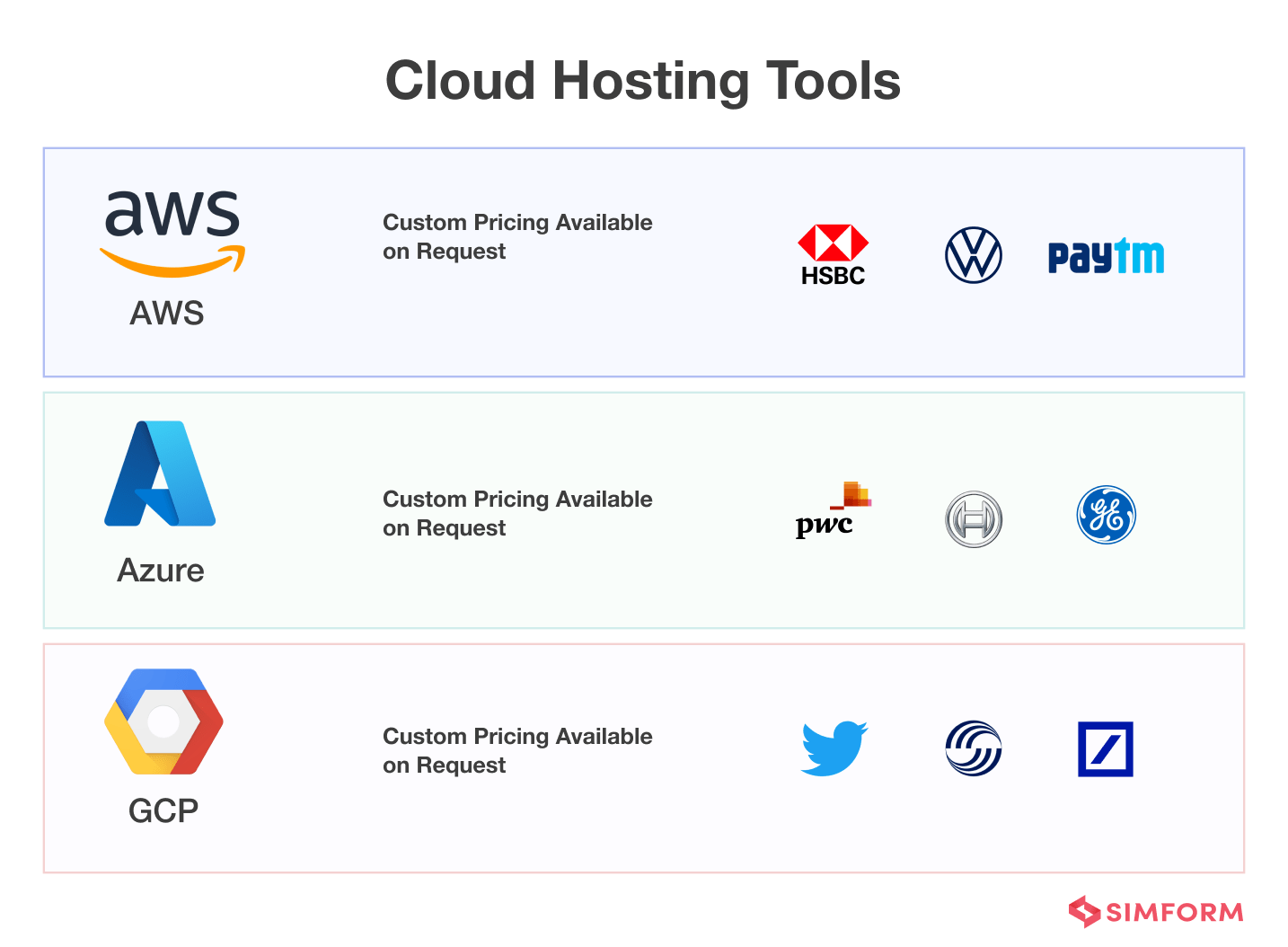
21. Top build automation tools
As a part of a larger CI/CD pipeline in DevOps, build automation helps standardize builds by automating the entire process of software build creation and the other related processes, such as packaging the binary code and running the automated tests.
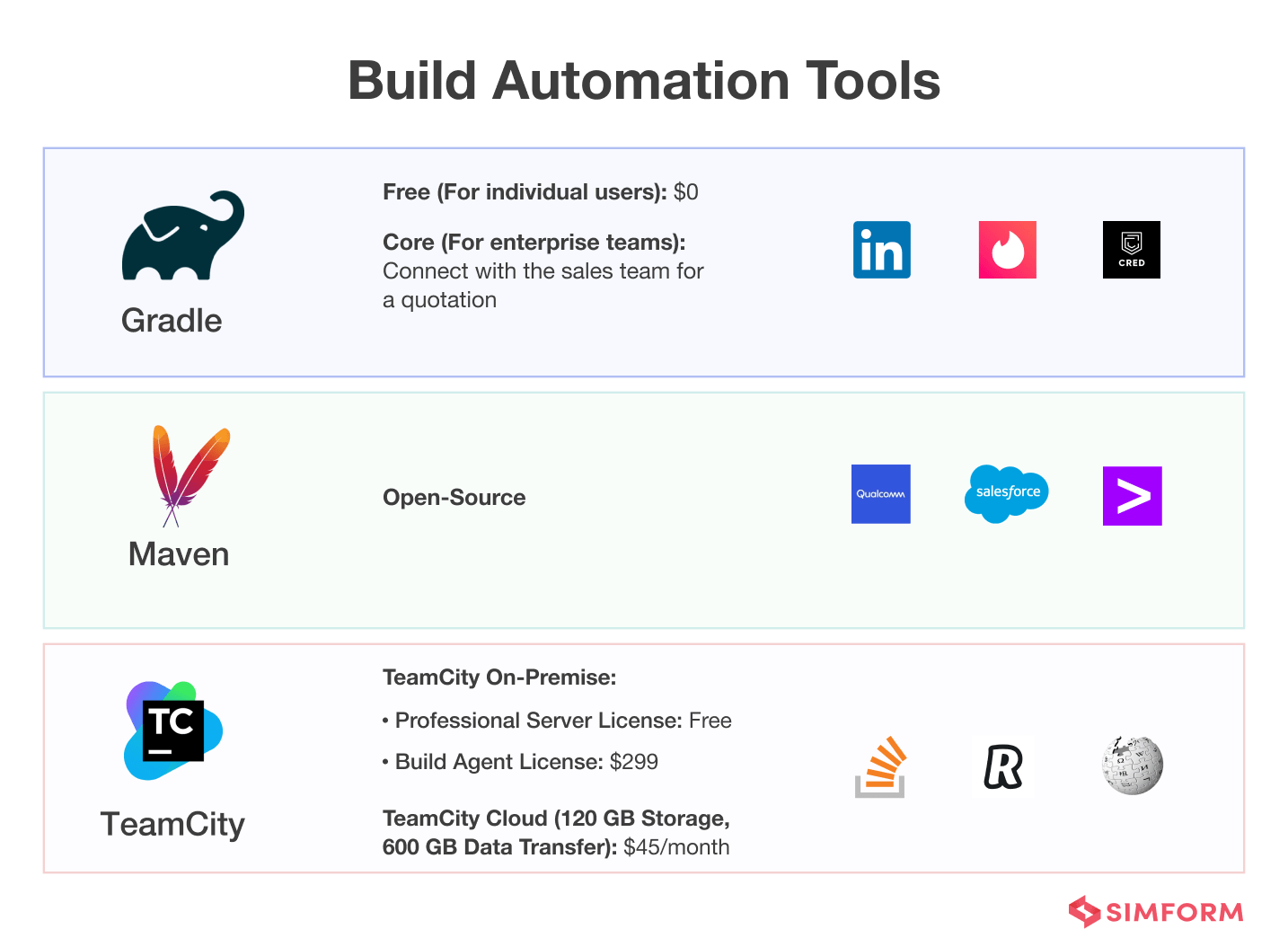
22. Top DevOps version control tools
Source code management or version control tools are the software that helps you keep track of every small change made to the codebase without making a huge effort.
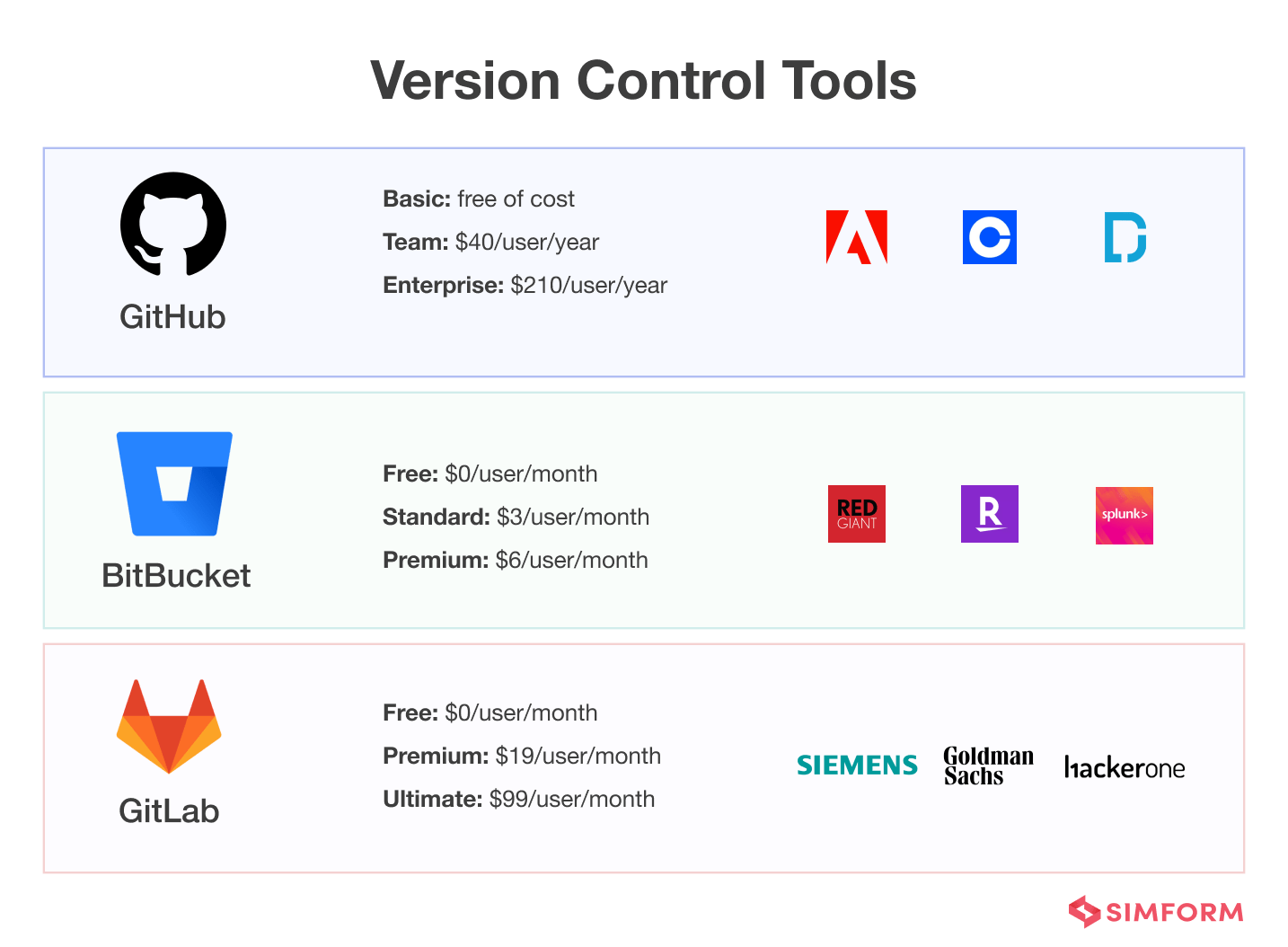
23. Top test automation tools
Test automation tools help organizations run automated test cases, manage test data, and utilize the results to improve software quality. With minimum human intervention, businesses can achieve speed, reliability, and efficiency in the testing campaign.
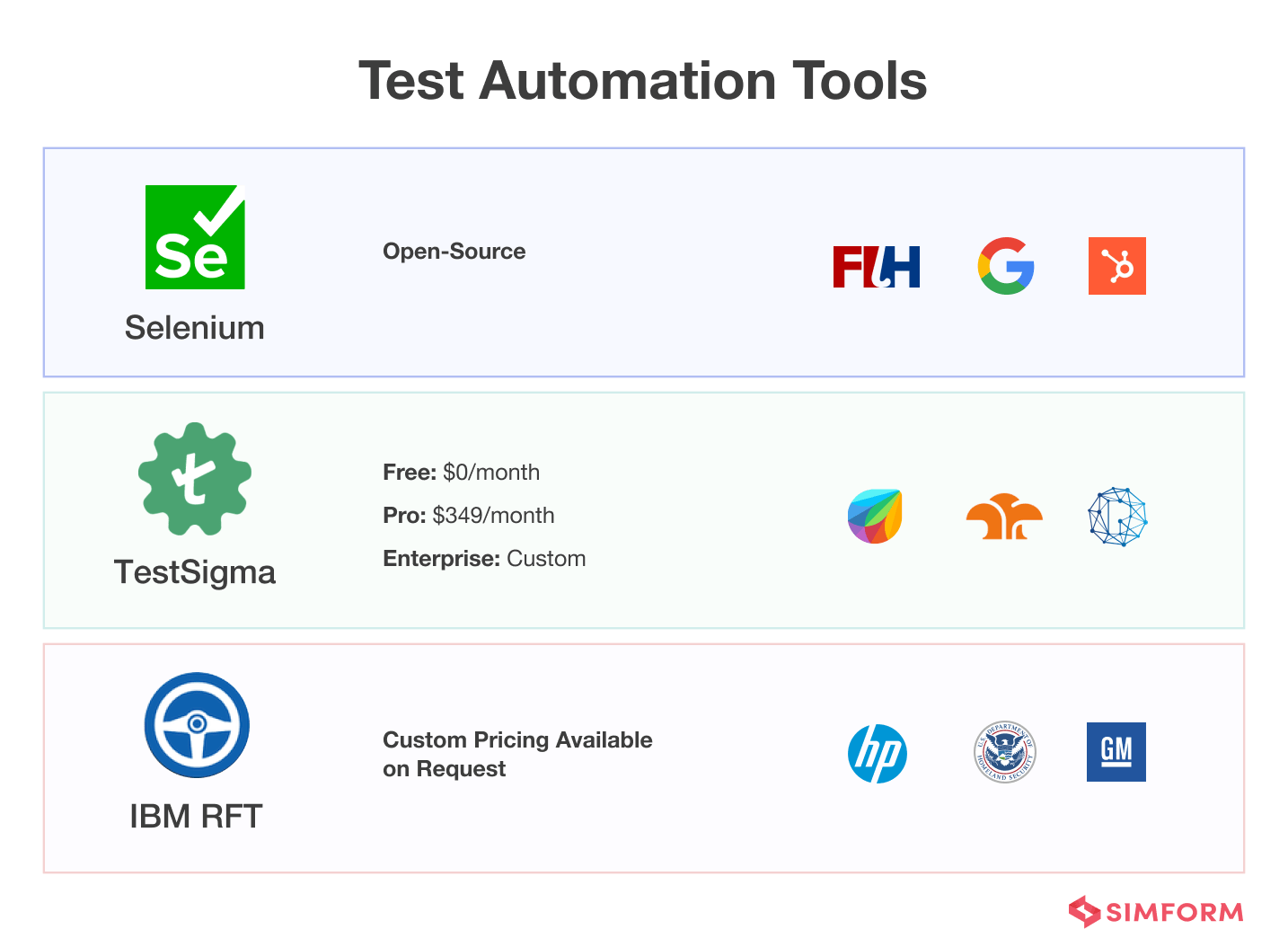
24. Top DevSecOps tools
DevSecOps tools support security teams by integrating security into continuous integration, continuous delivery, and continuous deployment pipeline, thus minimizing risks.
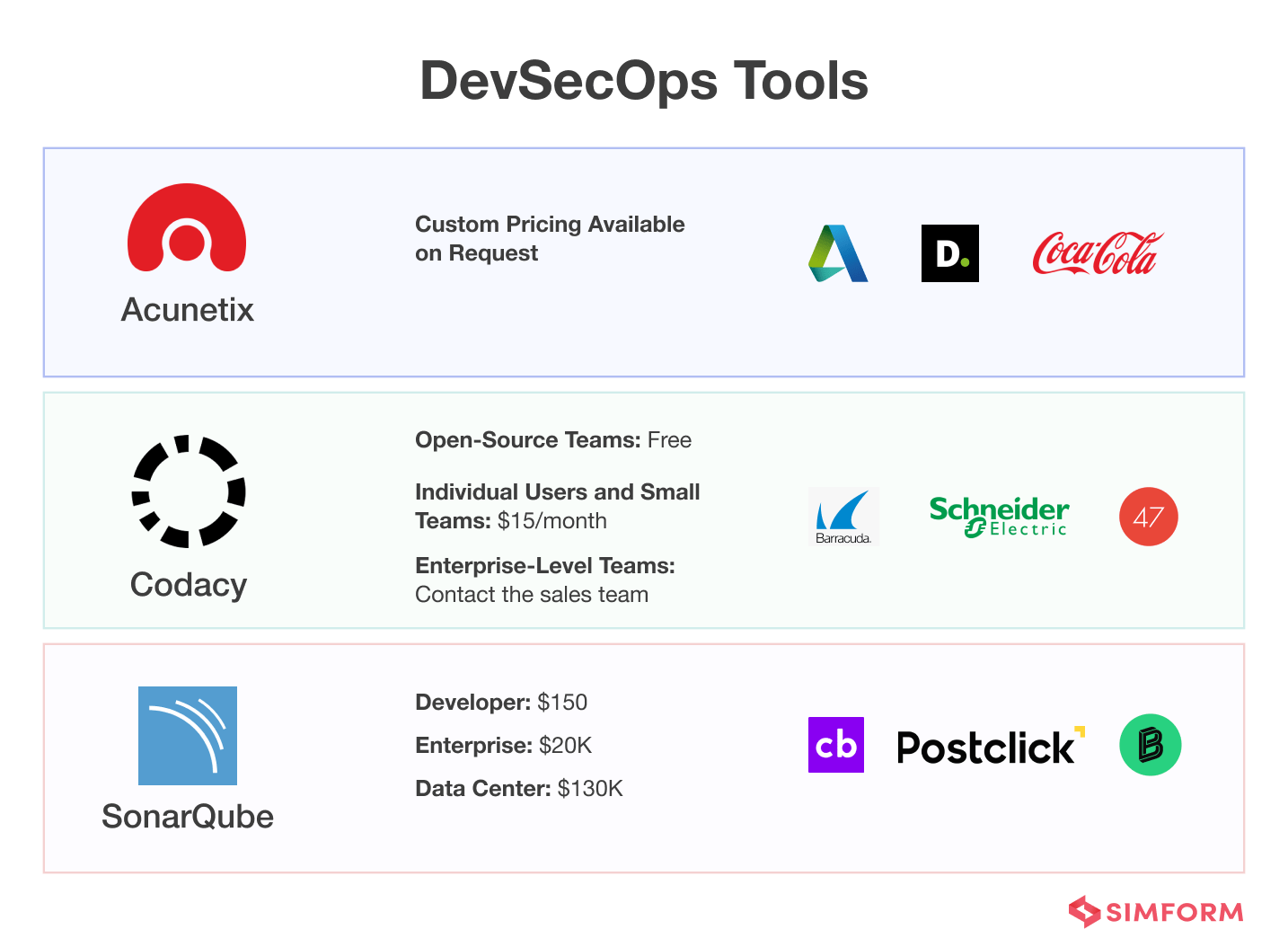
25. Top application performance monitoring tools
Application performance monitoring tools help organizations track performance over time and alert DevOps teams to the issues so that they can proactively address them.
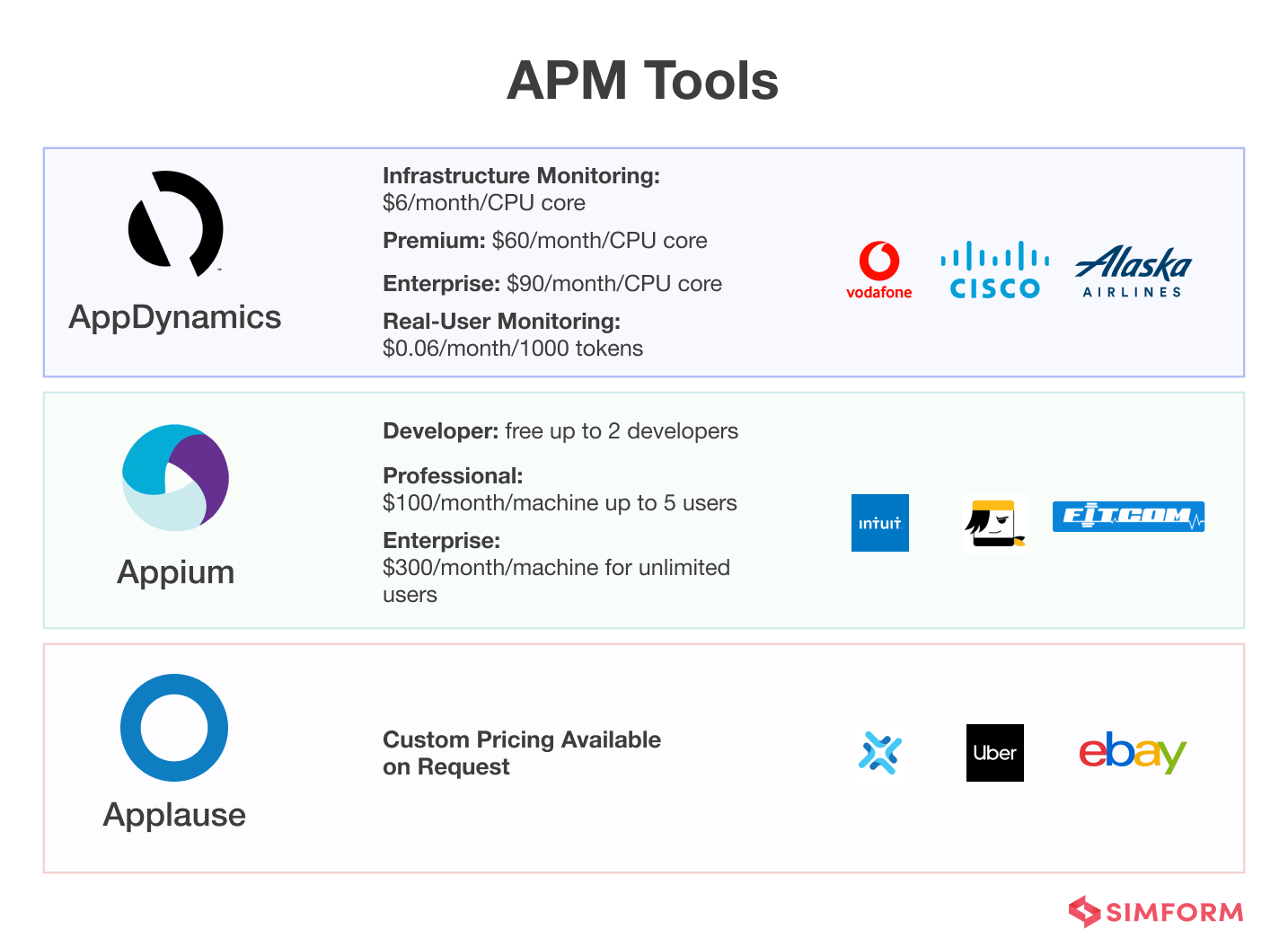
CI/CD: The cornerstone of modern DevOps
26. CI vs. CD
CI and CD both work in tandem to enhance the DevOps strategy of an organization. While Continuous Integration (CI) is about automating the integration of various developers’ code changes into a single software project, Continuous Delivery (CD) automates the delivery of the modified code to testing and development environments.
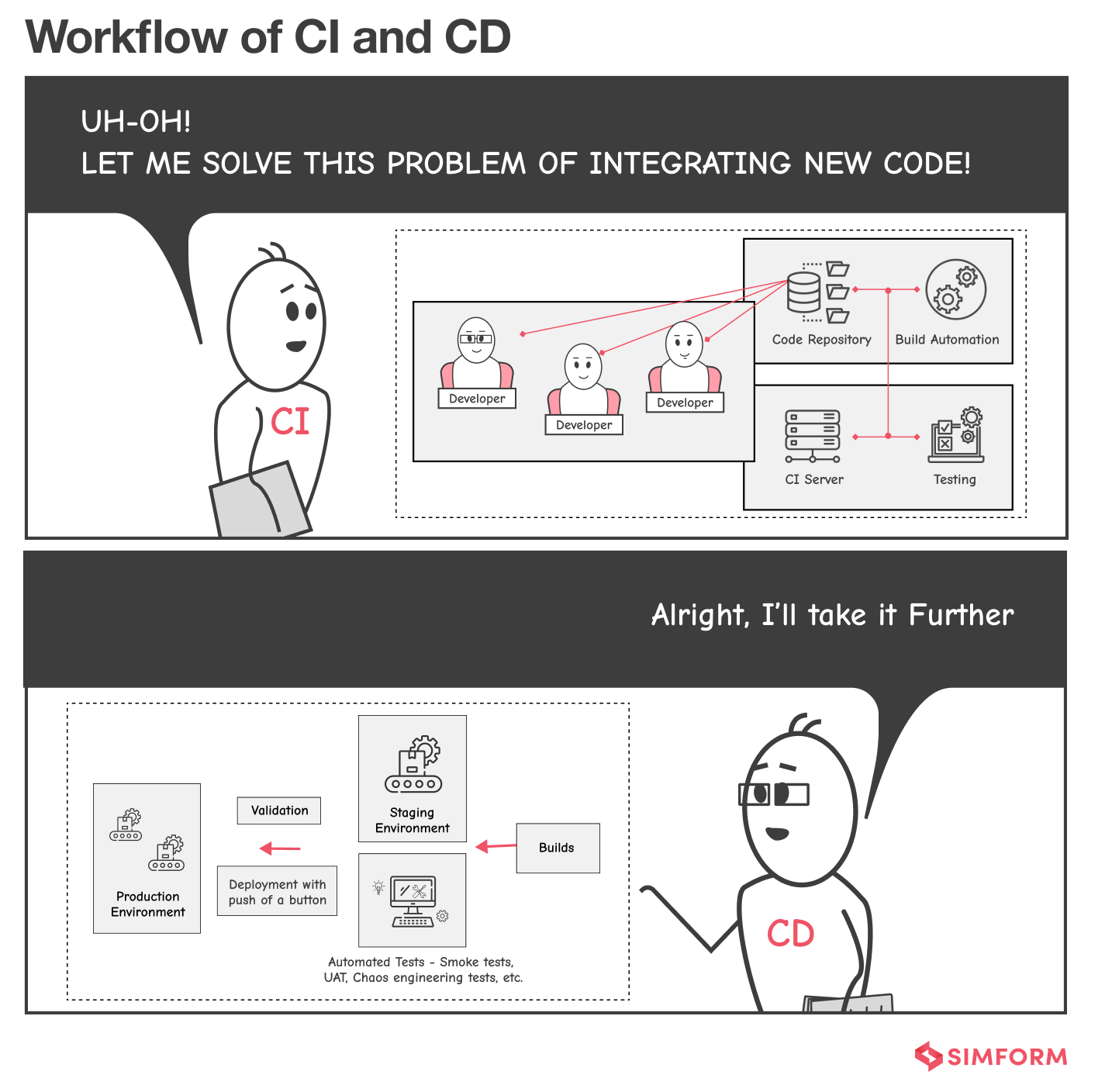
27. The CI/CD process
An essential part of DevOps, the CI/CD pipeline enables development teams to create a software build and make changes to the code that are automatically tested and then pushed out for delivery and deployment.
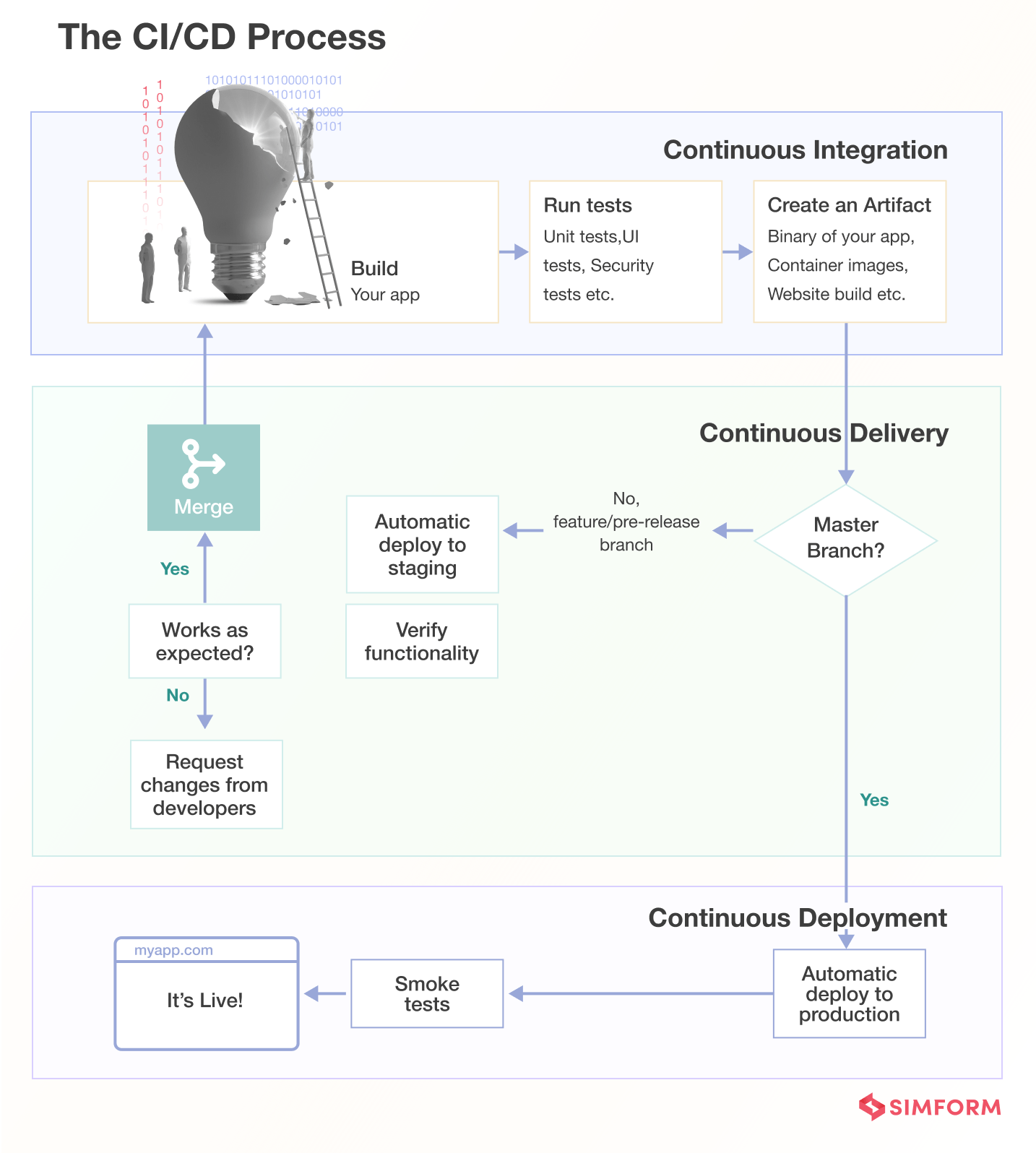
28. Release vs deployment
Deployment and release are often used interchangeably. However, they are different! While deployment is a shift of software from one controlled environment to another, releases are a collection of changes for users to experience.
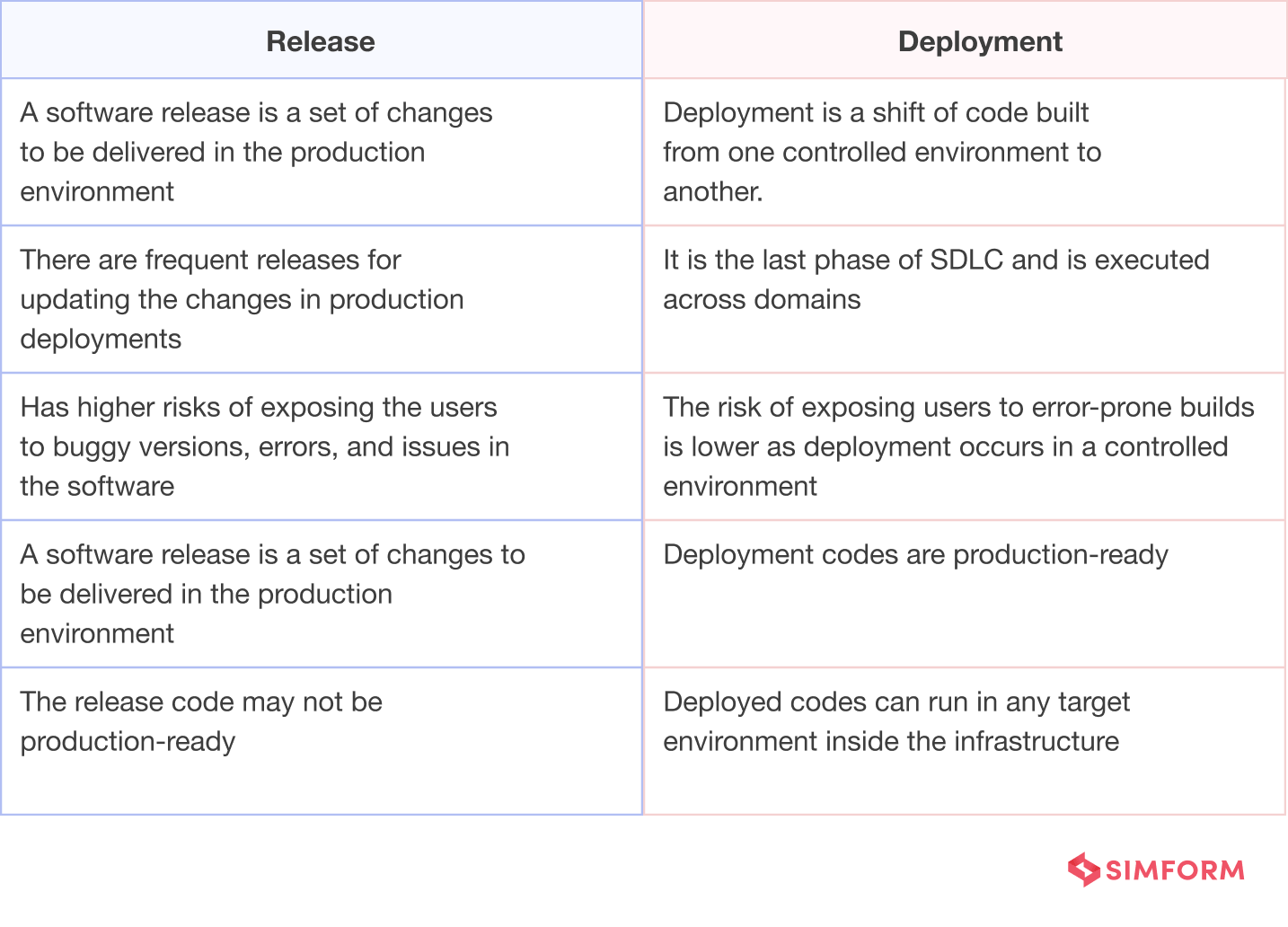
29. CI/CD KPIs for success
With a high-performing CI/CD pipeline, you won’t have a tradeoff between deploying changes fast and delivering a reliable and robust product. By measuring and monitoring the extent to which you’re using automation, the speed of activities, and the quality of your software, you can identify areas for improvement and later know the effect of the changes you’ve made.
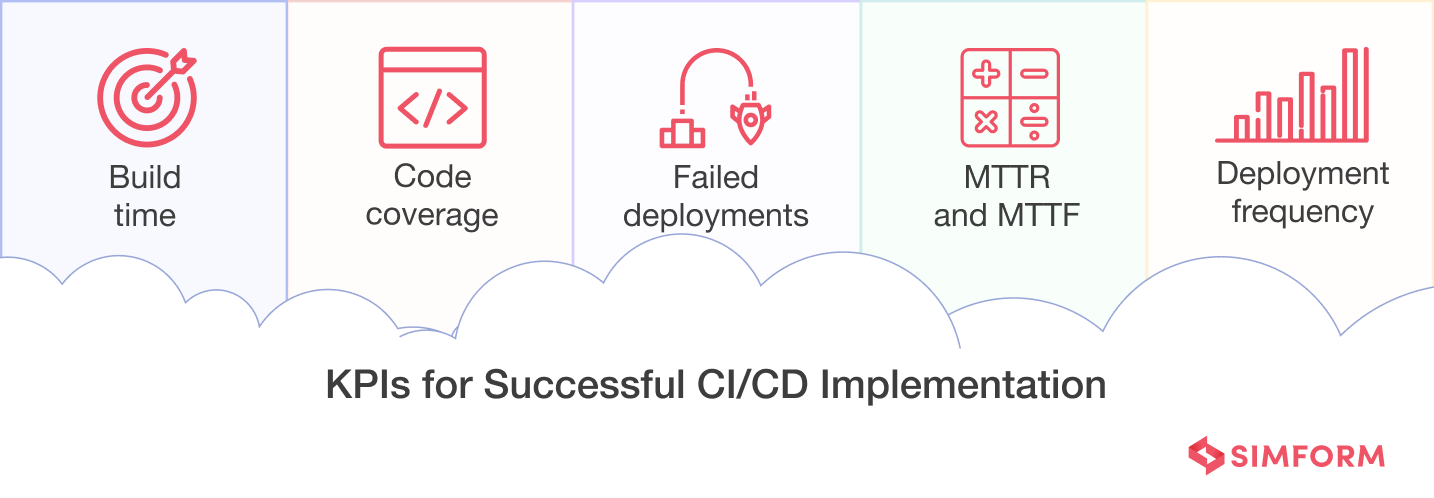
30. Factors to consider before selecting CI/CD tools
Different industry verticals, like media and entertainment, retail, eCommerce, healthcare, etc., are increasingly adopting CI/CD best practices to make the deployment easy. However, every organization will have particular continuous delivery needs at the end of the day. Here are some suggestions to keep in mind while selecting deployment tools for CI/CD.
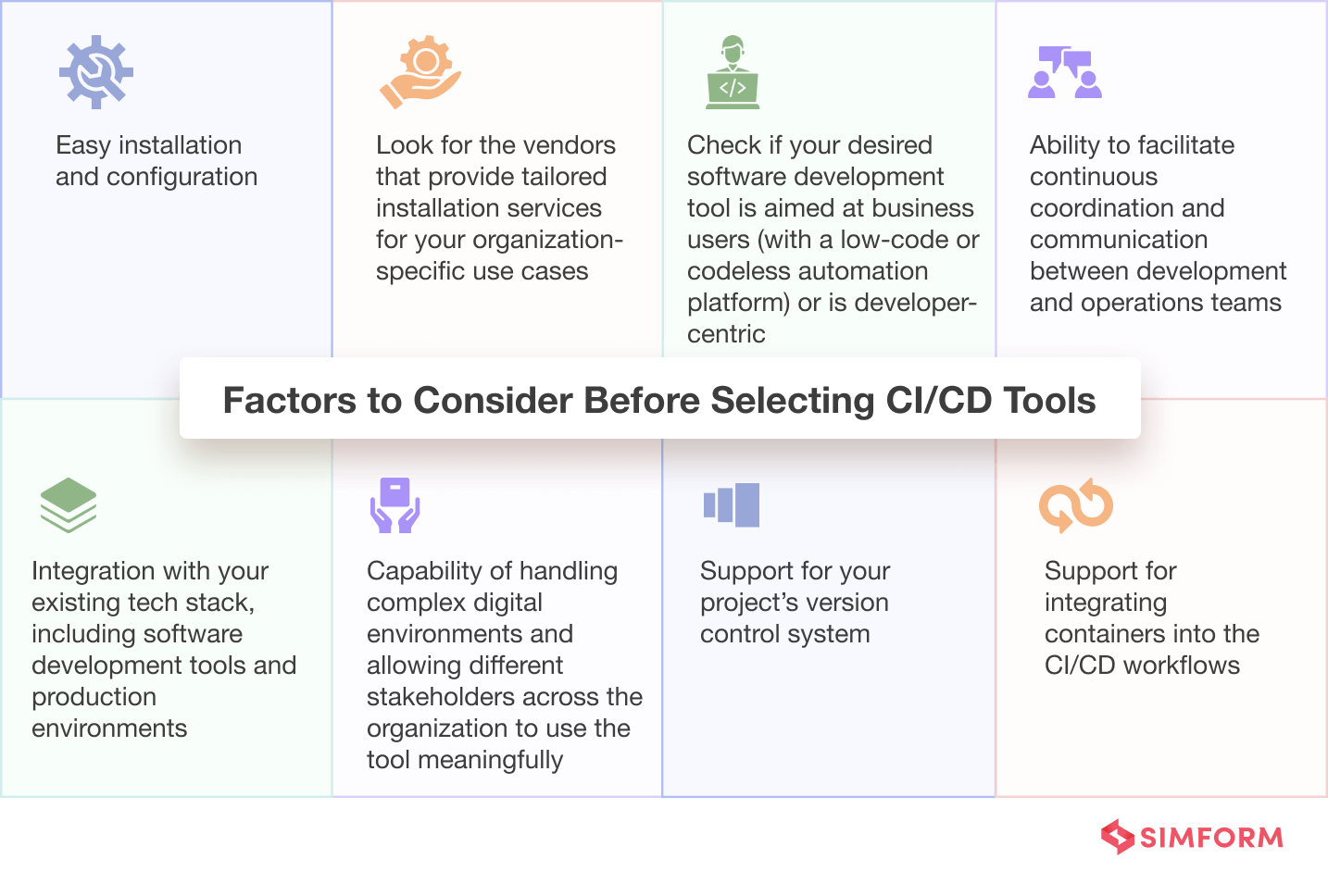
31. Top 8 CI/CD tools
The continuous integration and continuous delivery tools market is projected to reach ~US$ 19 Bn by 2031. In such a case, for any organization, choosing the right tool is essential for establishing a smoother path to production and increasing the speed of innovation.
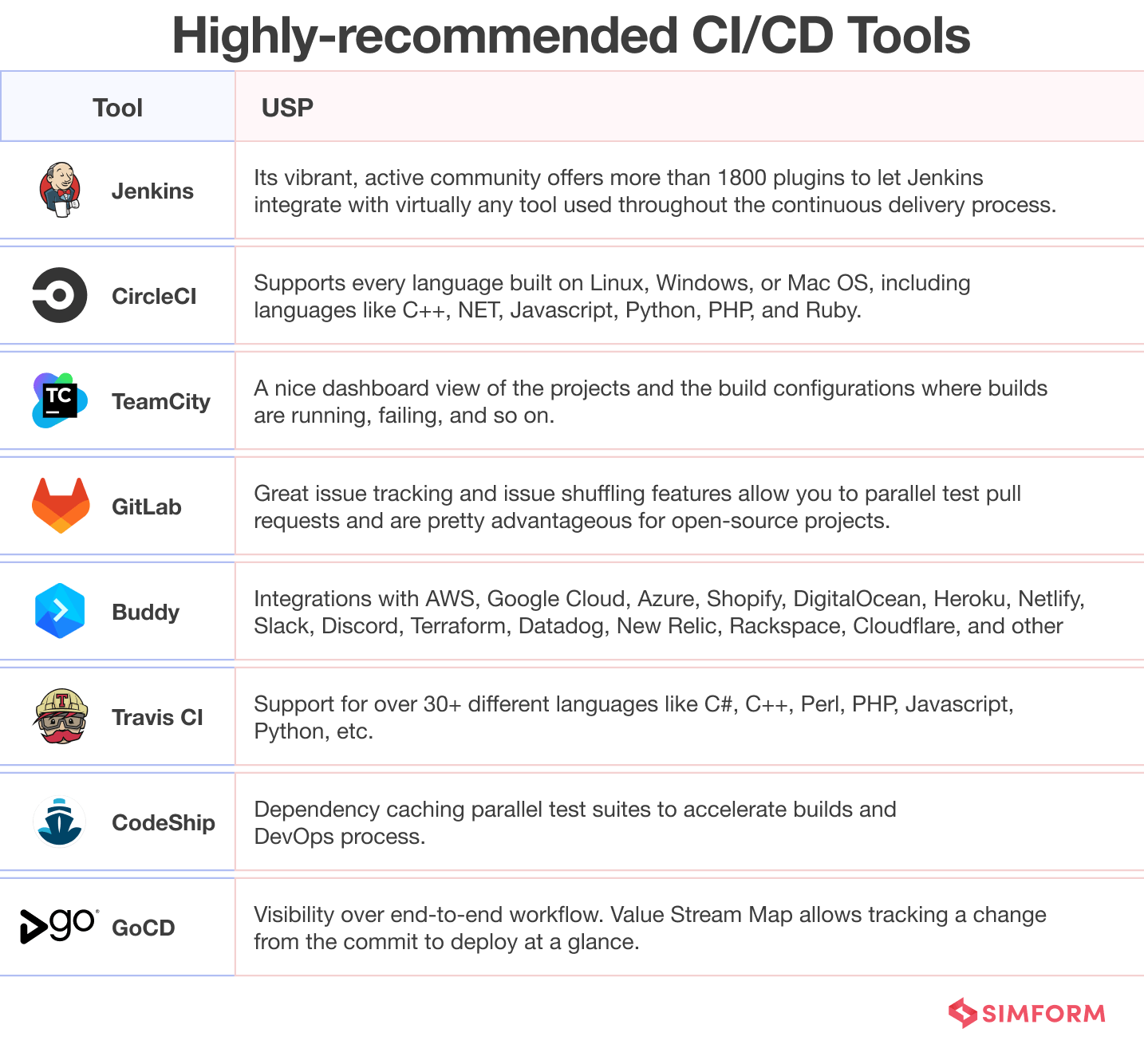
32. Stages of CI/CD pipeline
A CI/CD pipeline would have several scripts requiring execution in a specific order to achieve a common goal. Code – submitted at the start of the pipeline, passes through a series of stages inside the pipeline, and then gets published as production-ready code. Each phase follows proper standards, well-detailed processes, and specific tools.
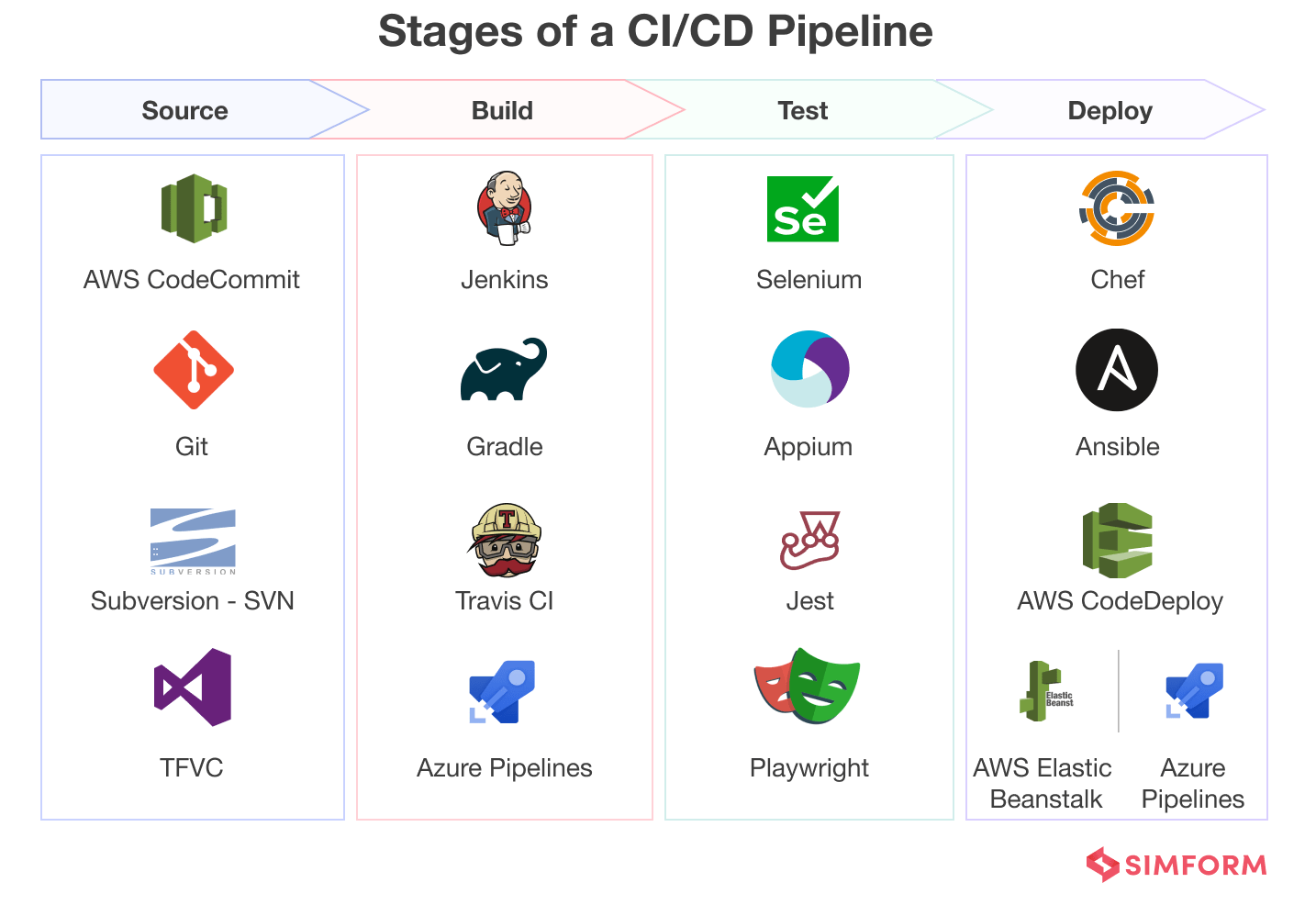
33. Attributes of a good CI/CD pipeline
The ultimate purpose of employing a CI/CD pipeline is to give the teams fast, reliable, accurate, and comprehensive feedback for their development cycle and let them deploy the best-quality software.
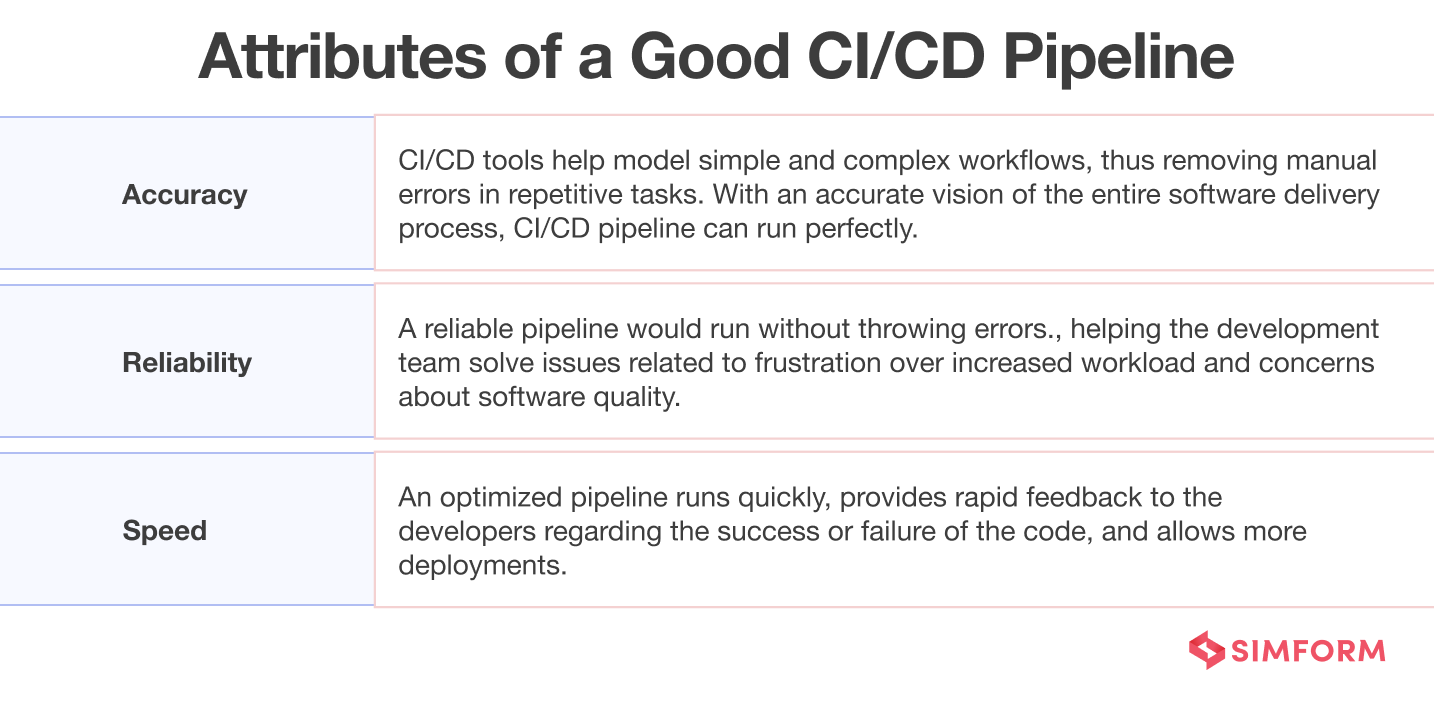
34. Some CI/CD examples
There are multiple ways and tools to create a pipeline. A few names like Jenkins, Docker, Kubernetes, and Git frequently appear in different combinations in many of the CI/CD pipelines.
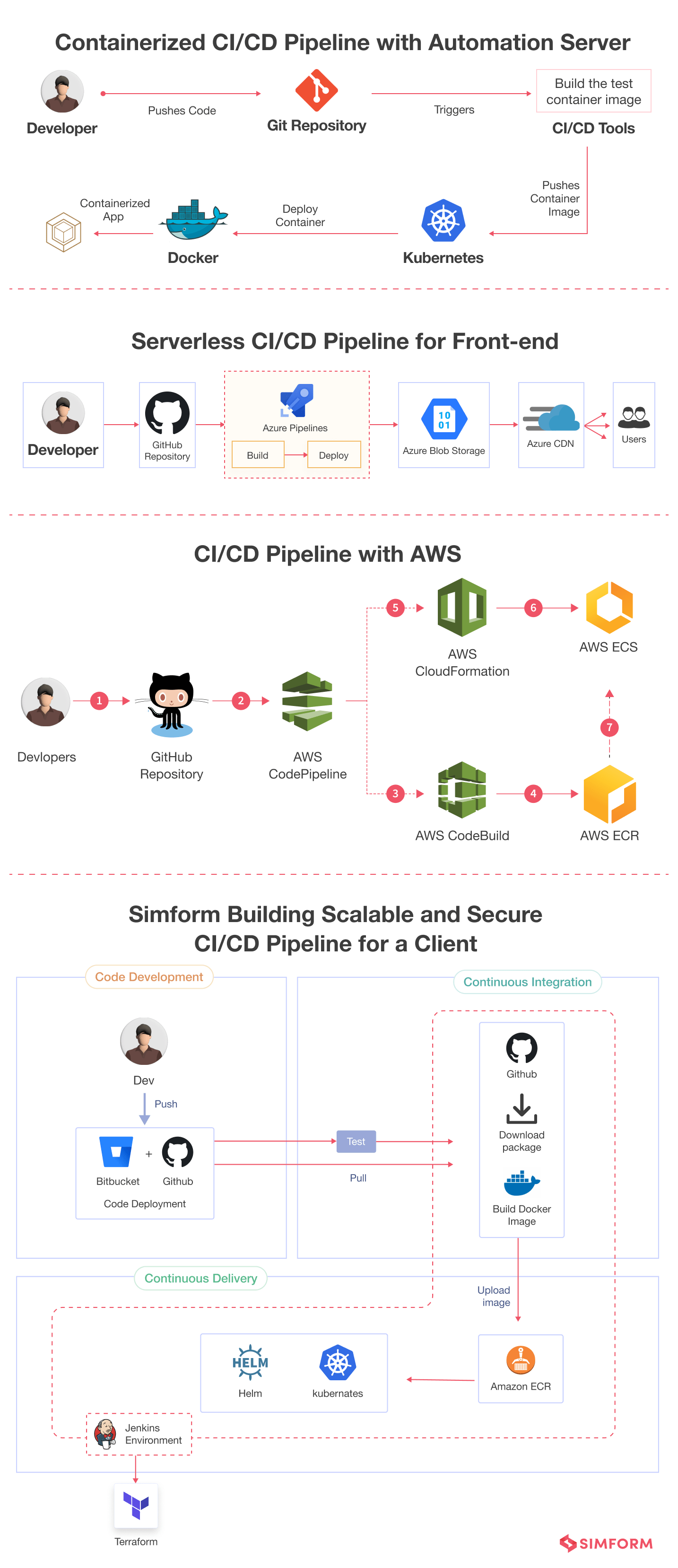
Containerization: A game-changer in modern software development
35. Myths and facts of containerization
Containerization is all about packaging the requirements of an application under development in the form of a base image. This image can run in an isolated space (containers) on different systems. However, before jumping deep into the technology, it is essential to squash out some common misinterpretations of containerization in DevOps.
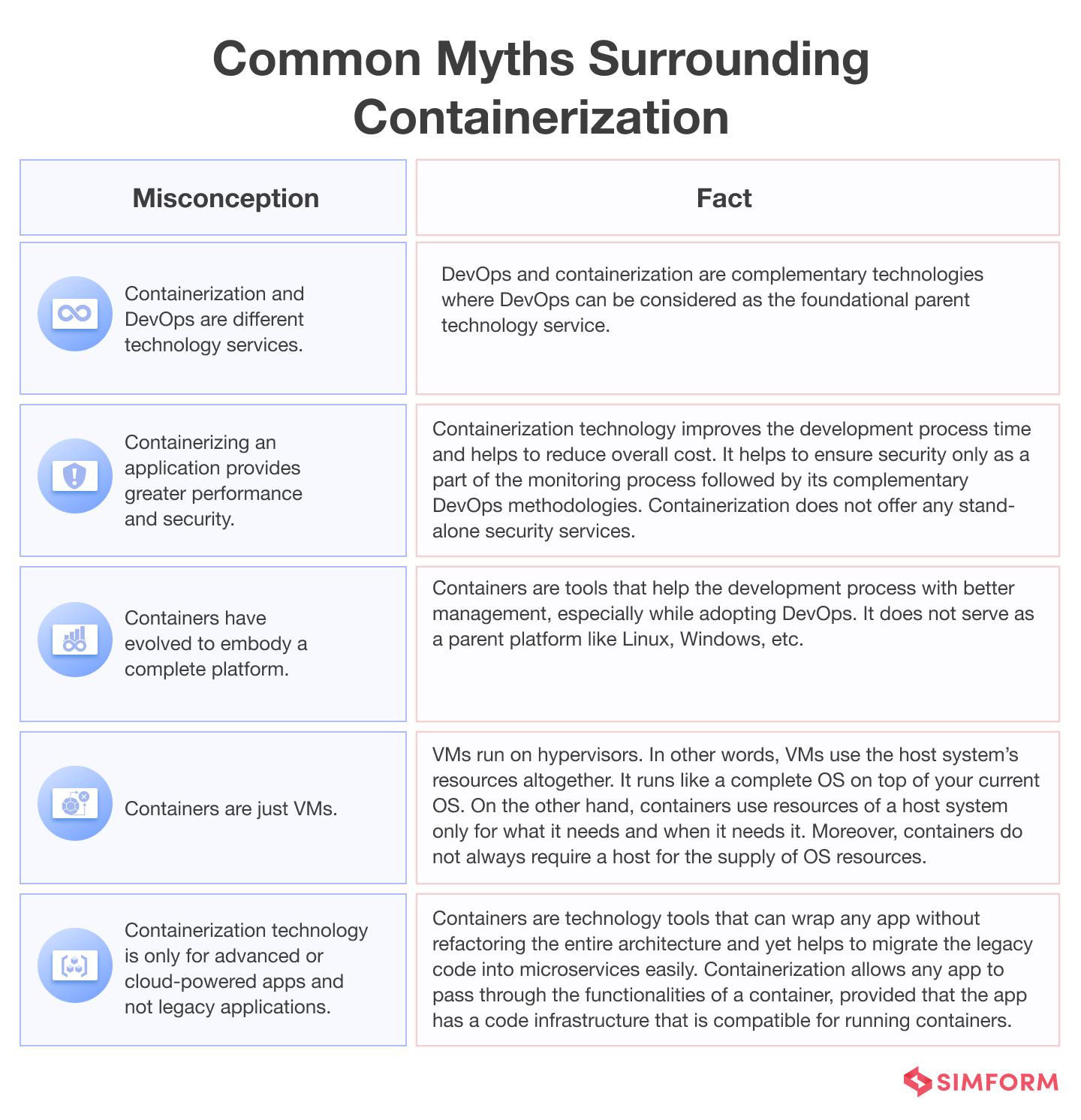
36. VMs vs. Containers: Which one to choose?
Deciding between VMs vs. containers can be tricky. You need to consider security, scalability, infrastructure needs, portability, etc. However, every organization has a different structure and problem. So, the solution has to be specific. For example, VM is the ideal choice if you are looking for hardware-level virtualization. On the other hand, containers help you with better scalability, flexibility, and faster deployments with software-level virtualization.
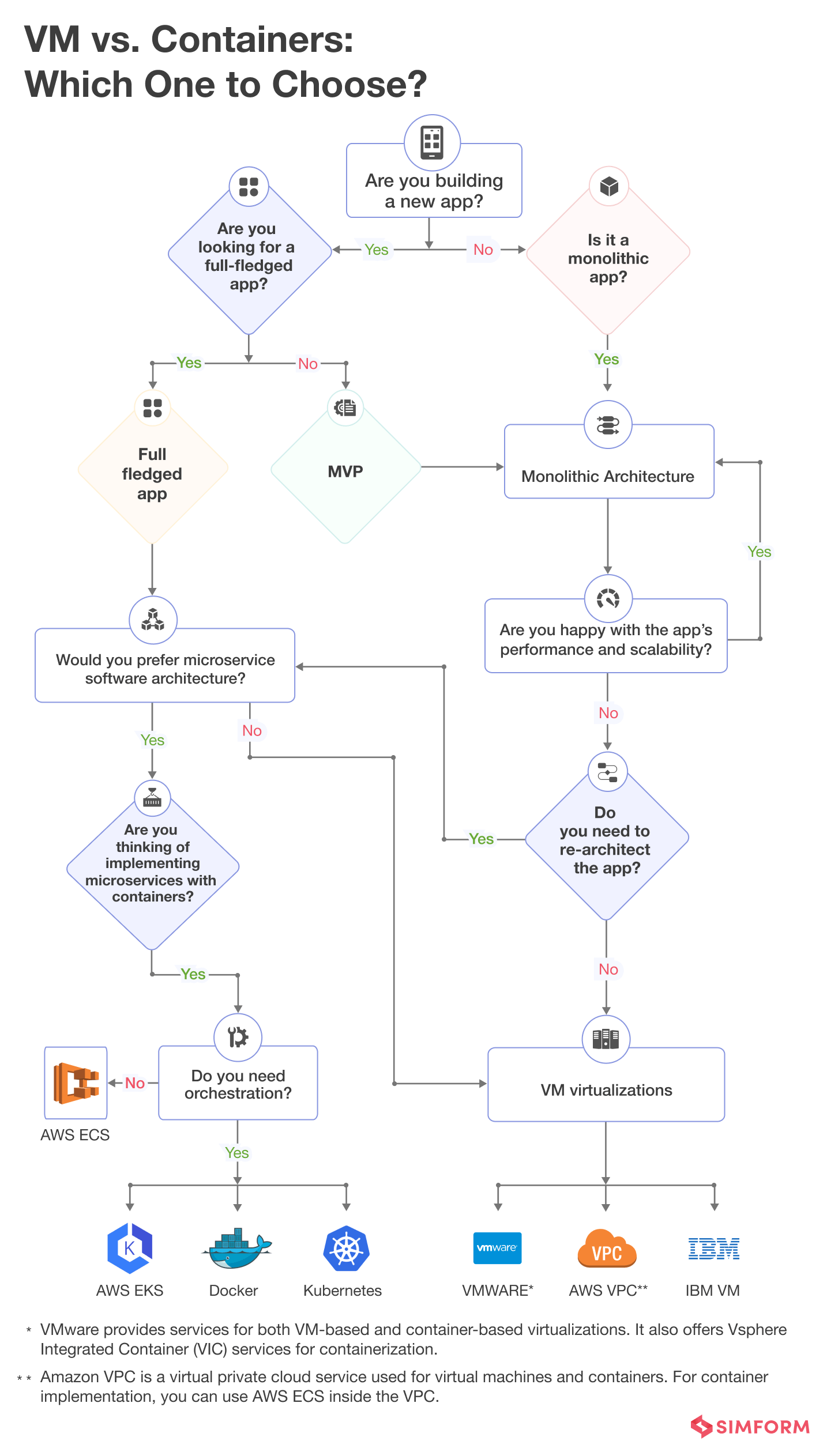
37. Top containerization benefits
As a natural evolution of virtualization, containerization is the answer to improving the lifecycle management of today’s state-of-the-art software development.
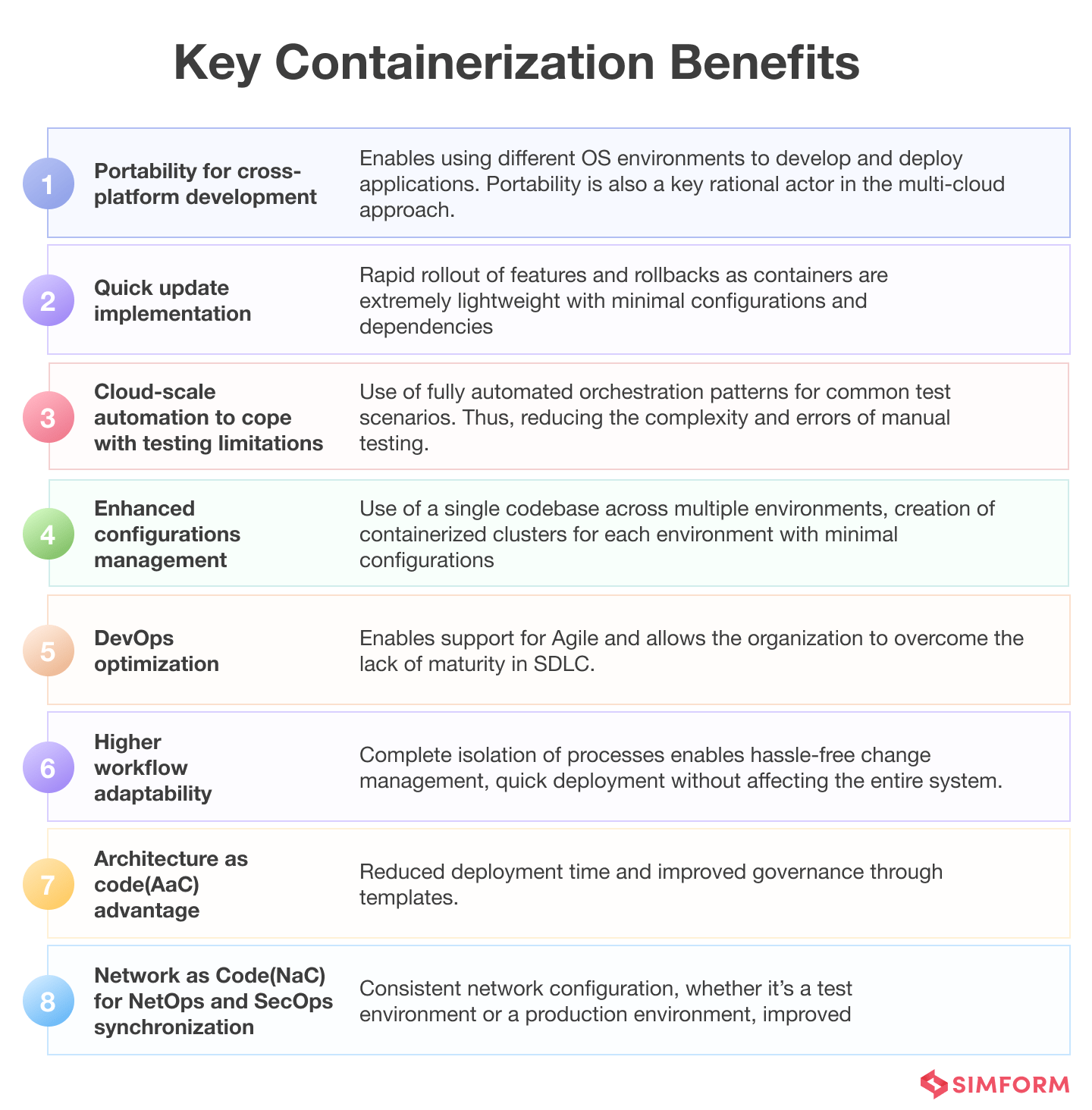
38. Containerization best practices
As containerization technology and its ecosystem are now mature enough, we can understand what approaches and practices can be appropriate and worthy of standardization and automation. The point to keep in mind here is that every practice cannot be equally important. For instance, you may not require to use some of the approaches to run a successful production workload, while others might be fundamental.
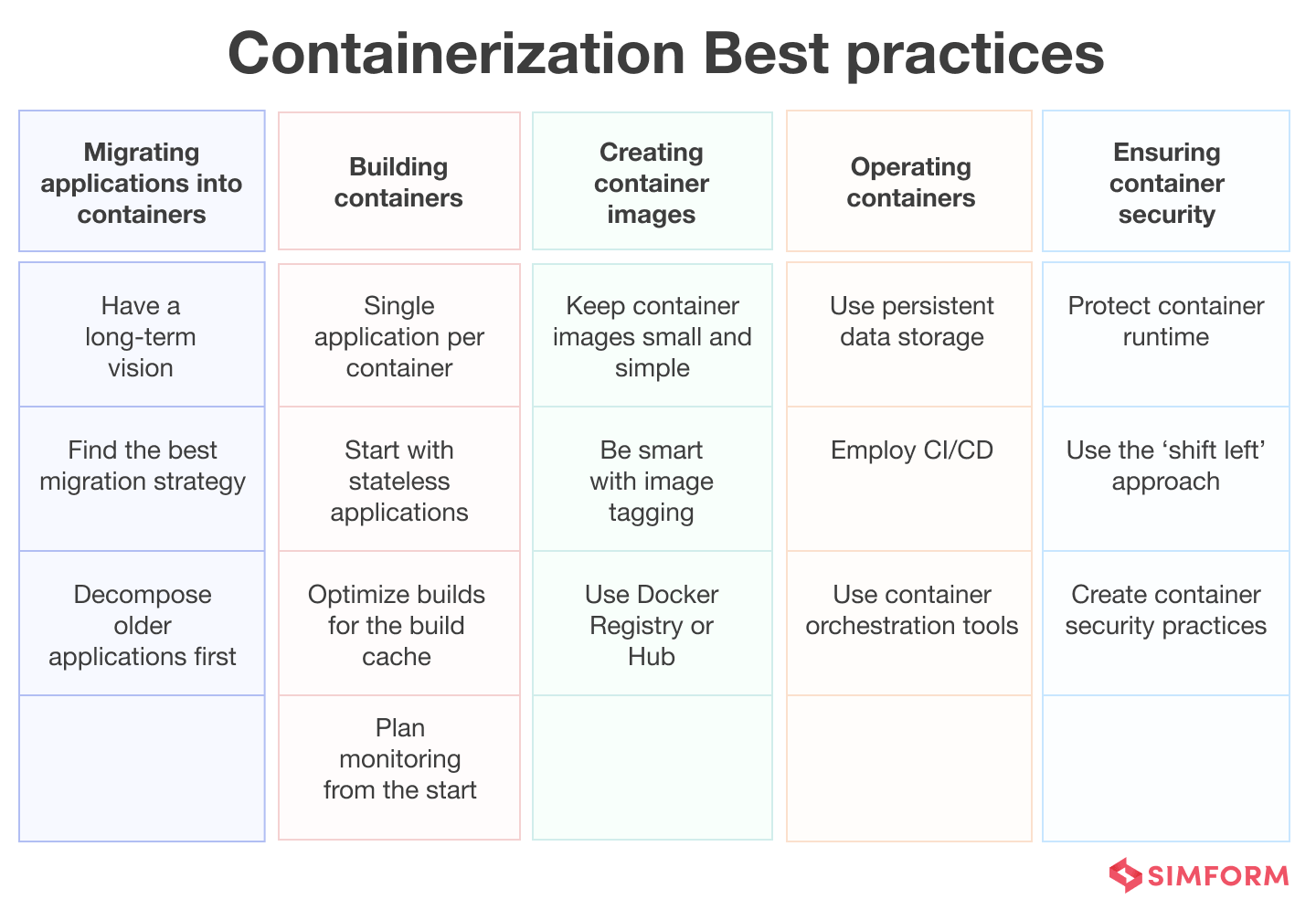
39. Containerization use cases
Until recently, adopting newer technologies was left mainly to bigger enterprises. Fortunately, that’s not the case anymore. While startups can use containers mainly to build consistency in environments, infrastructure, and environment isolation and implement different strategies, mid-sized organizations can use containers for cloud migrations, bringing agility and supporting continuous operations with no downtime.
Big enterprises can containerize legacy applications, build containers into the DevOps process, and enable the scaling of the IoT environment. Meanwhile, tech superpowers also prefer container-based microservices architecture and use multi-tenancy architecture.
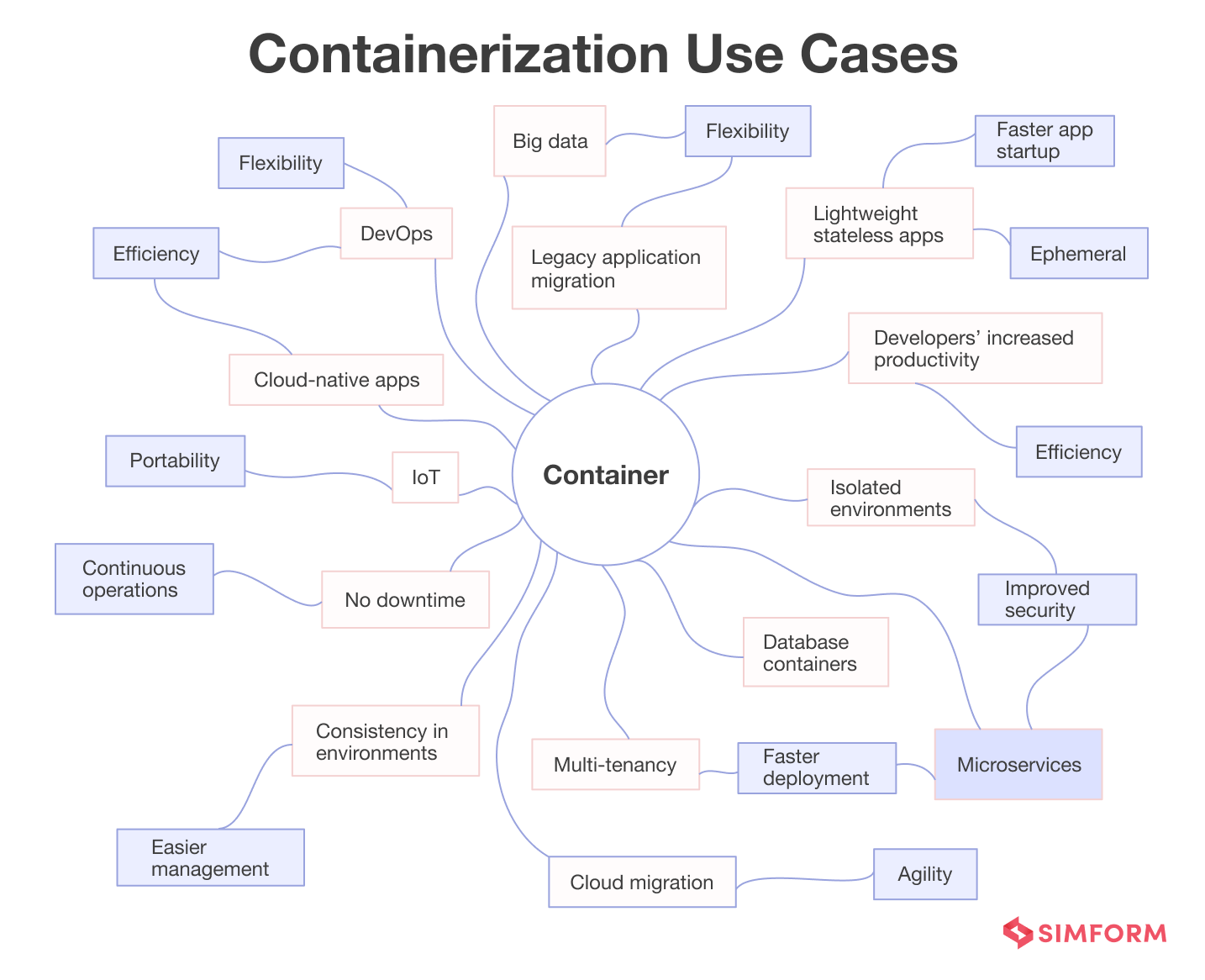
40. Top container management tools
A container management system becomes necessary as the number of containers exceeds what an IT team can handle. The tools help automate the creation, destruction, replacement, deployment, and scaling of system containers or applications.
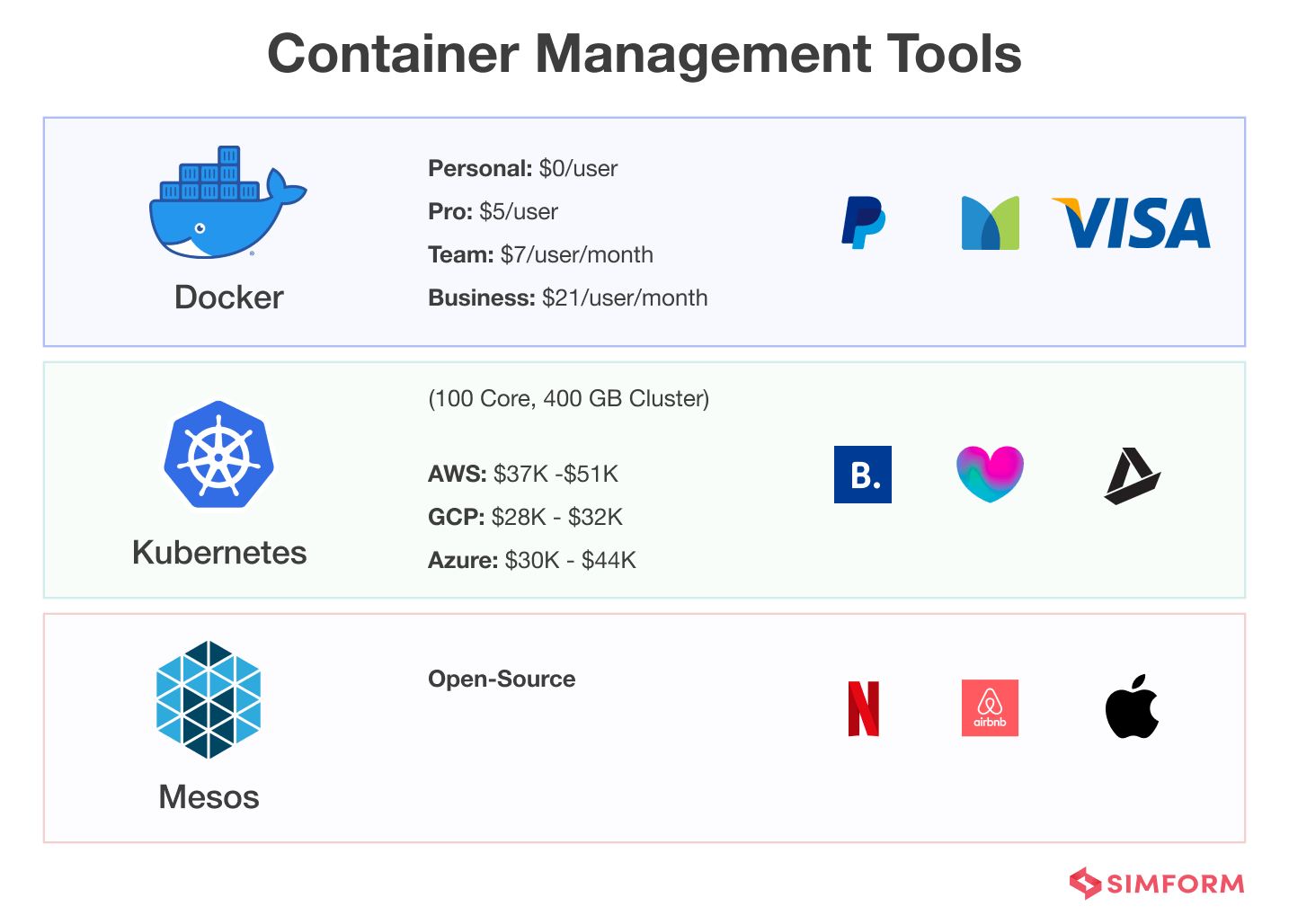
41. Docker use cases
As one of the most popular container tools among organizations of all sizes, Docker helps businesses build, share, and run applications. Enterprises use Docker in various contexts to achieve the benefits of portability, reusability, computing environment isolation, mobility, and scaling.
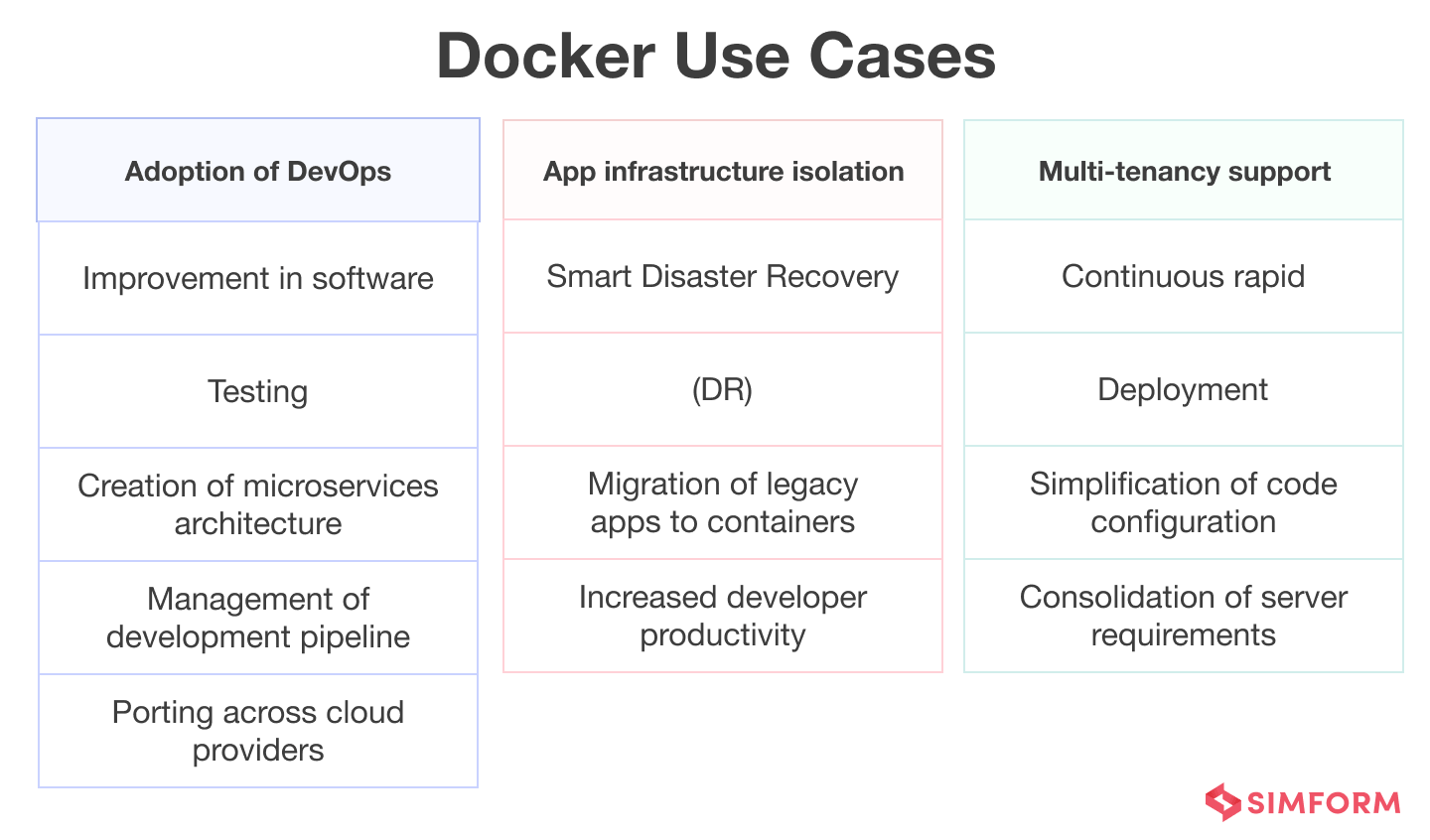
42. How container orchestration works?
An orchestrator tool ultimately aims to achieve – automating every aspect of application management – right from initial placement to deployment, from scaling to health monitoring. Despite every tool having different methodologies and capabilities to carry out the tasks, the container orchestration system generally follows three basic steps.
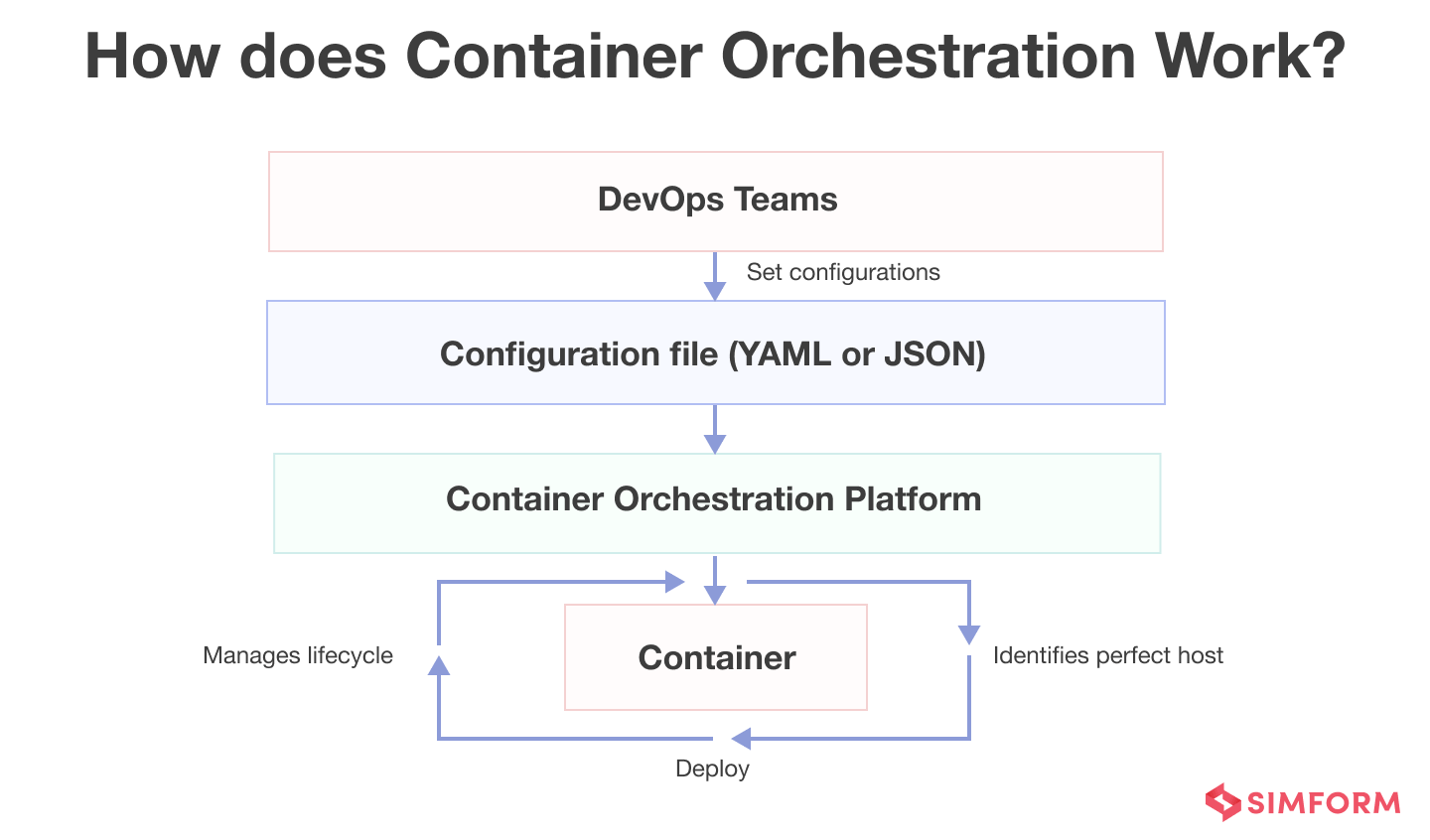
43. Popular container orchestration tools
A container orchestration platform is a fundamental entity providing tools to orchestrate containers and reduce operational workload. There are two options generally with container orchestration platforms.
The first option is self-built, where you build a container orchestration platform from scratch all by yourself. Another is to use one of the managed platforms, where the cloud provider manages installation and operations while you use its capabilities to manage containers.
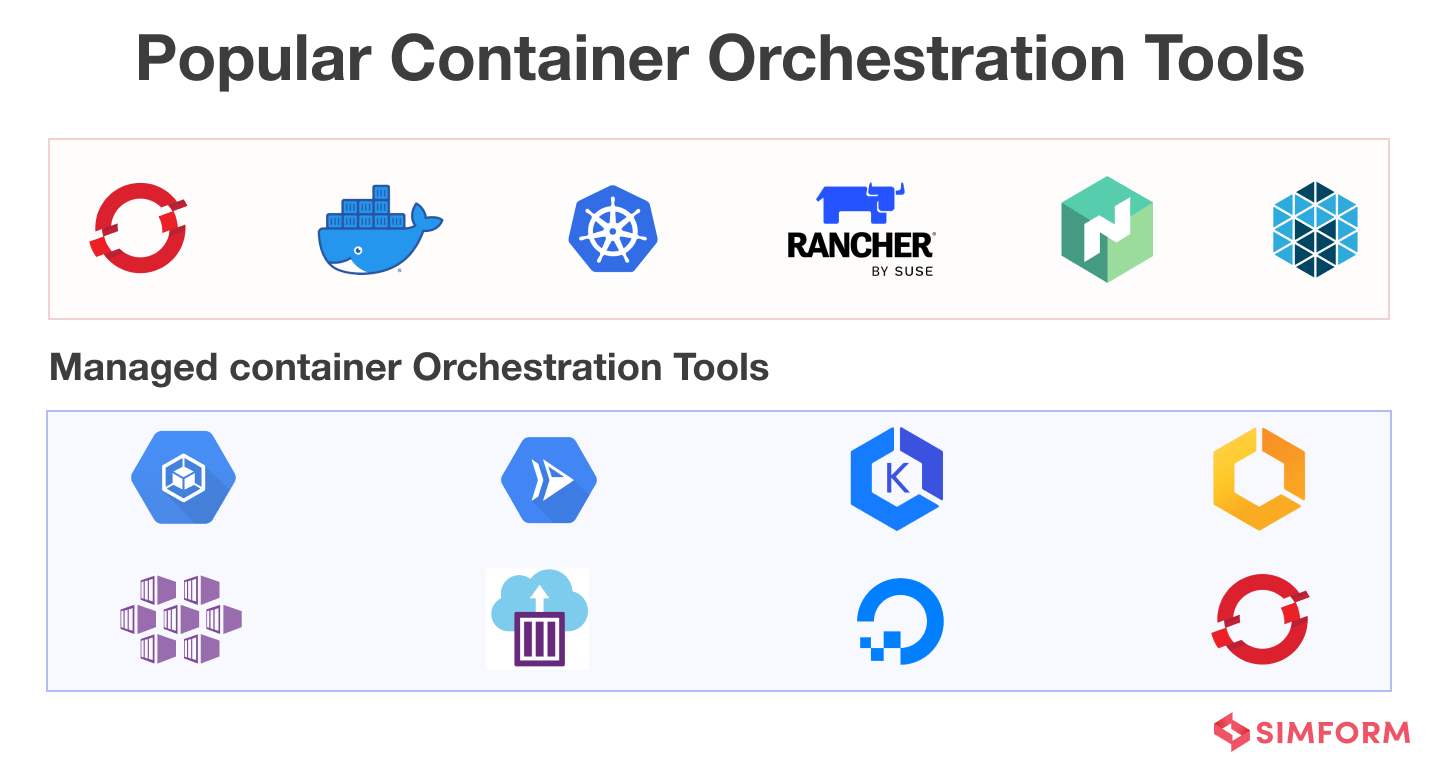
44. Kubernetes alternatives
Kubernetes is extremely powerful and a popular choice for enterprises. However, this open-source container orchestration tool has limitations like a steep learning curve, difficult transition, several hidden costs, etc. Other strong Kubernetes competitors make it easier for enterprises to select an orchestration tool most suitable for their needs.
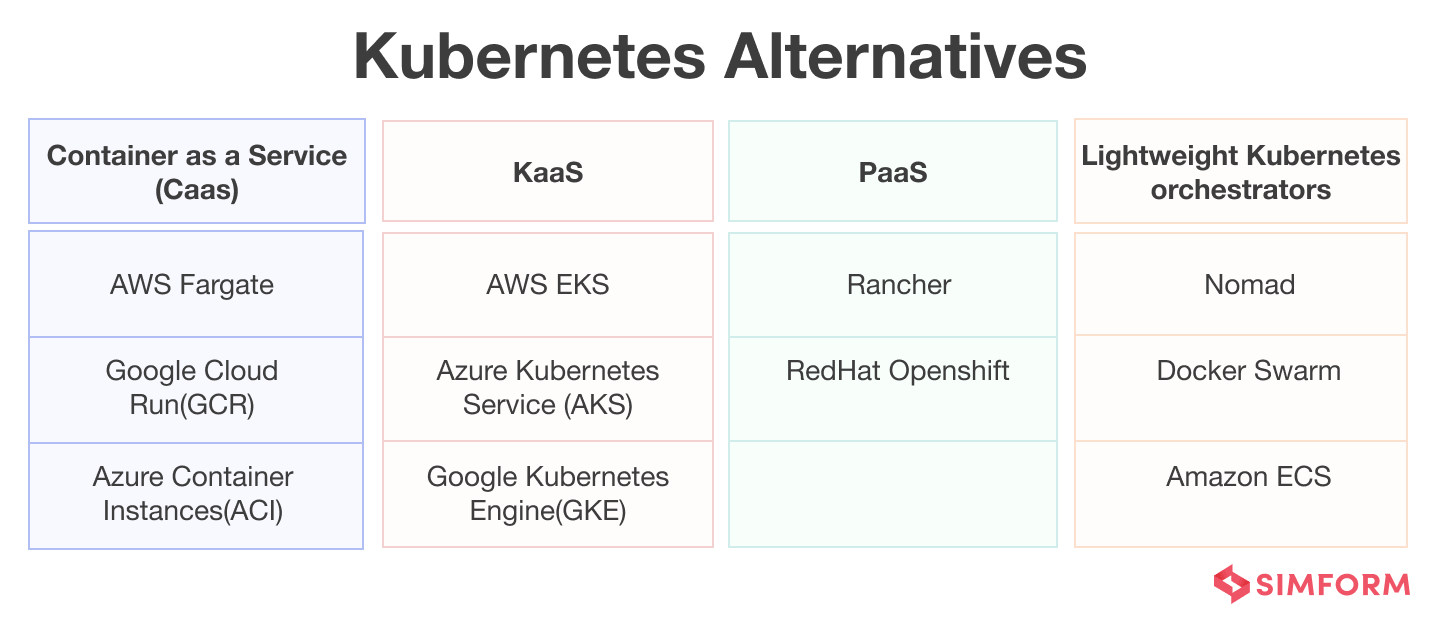
Implement the winning trio with Simform
Now we understand that while DevOps promotes collaboration, efficiency, and faster software delivery, CI/CD enables organizations to streamline their software development lifecycle, containerization help package applications with their dependencies into lightweight, portable containers. At Simform, we understand the significance of these technologies for modern businesses.
With our expertise in DevOps, CI/CD, and containerization, we offer comprehensive services to help businesses harness the full potential of these technologies. Whether it’s implementing DevOps practices, setting up robust CI/CD pipelines, or leveraging containerization for application deployment, Simform is your trusted partner in driving innovation, enhancing efficiency, and achieving digital transformation.